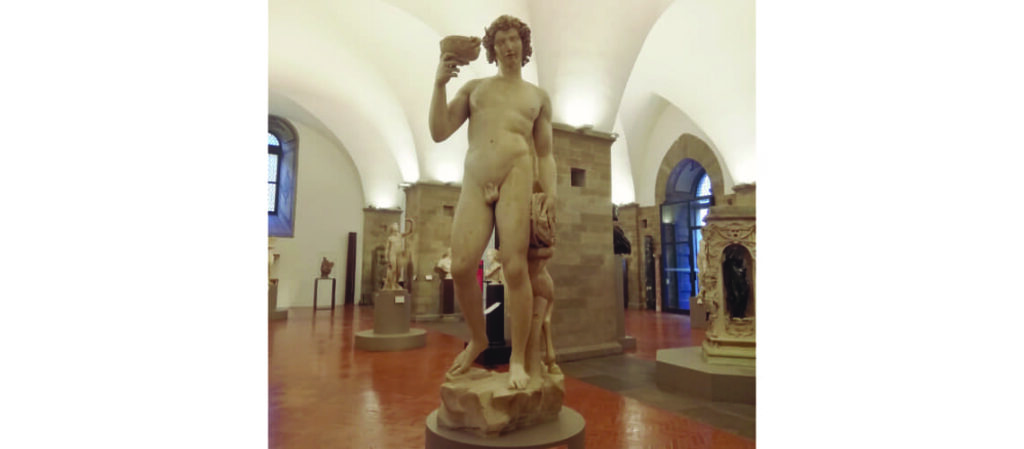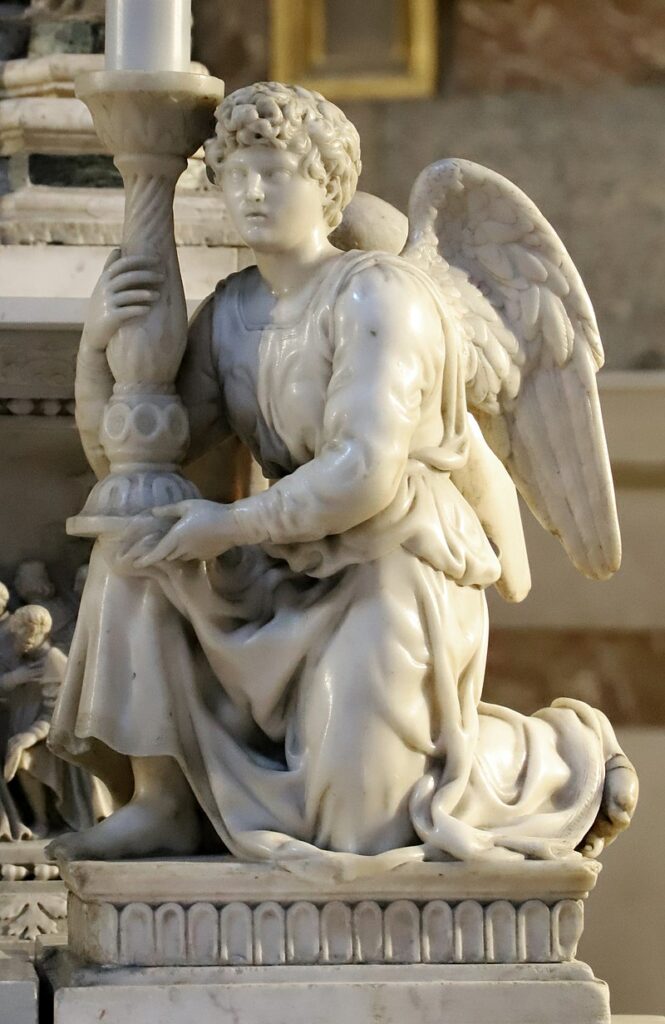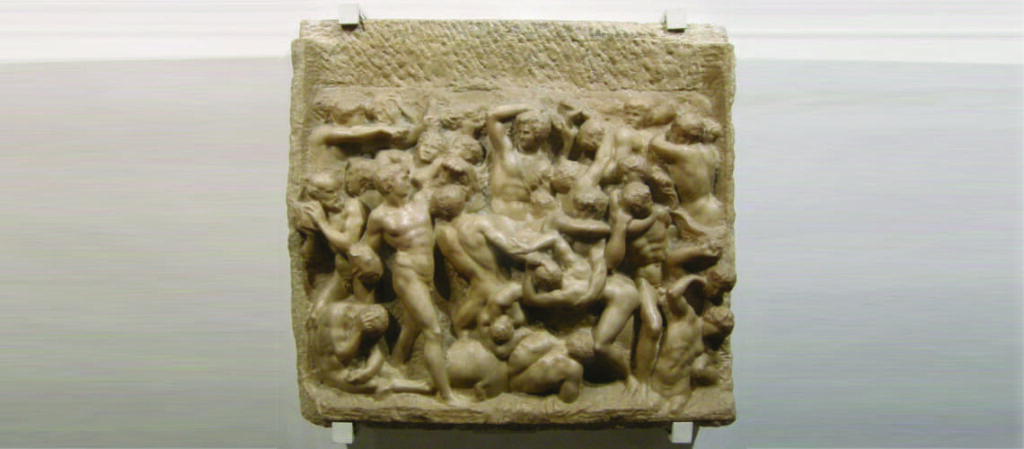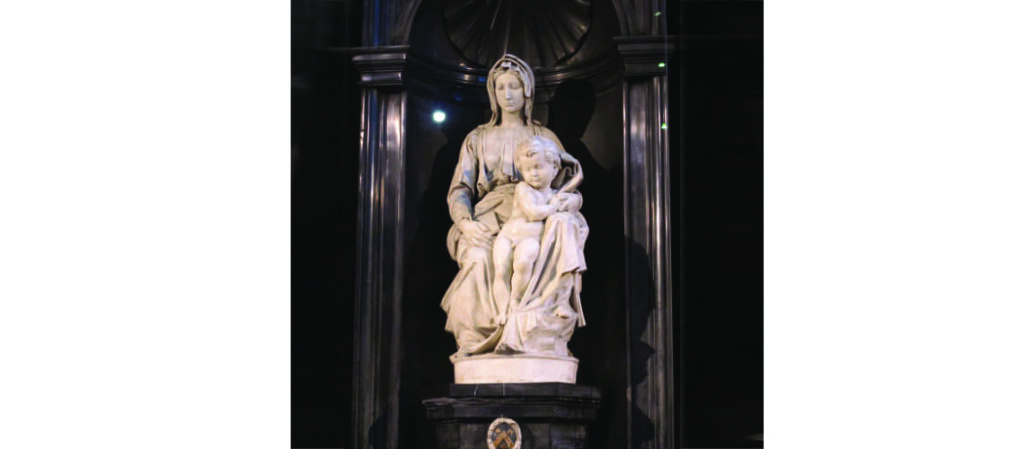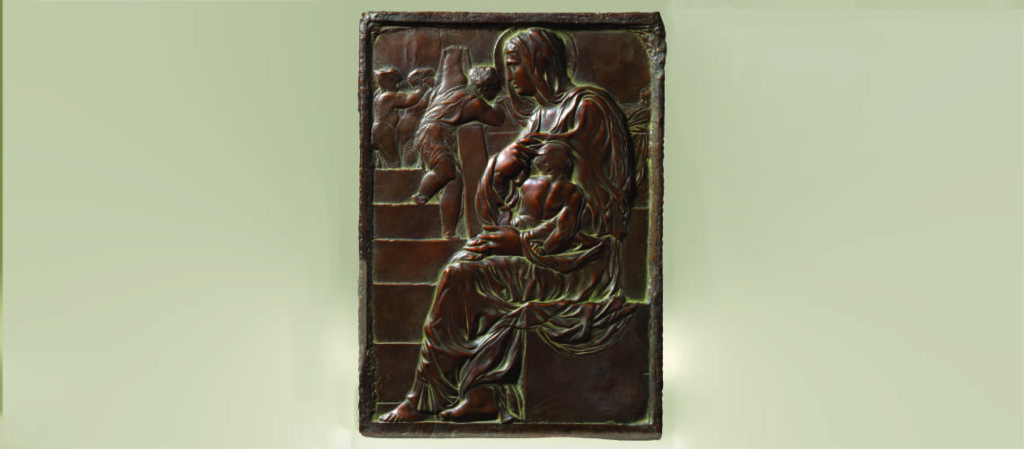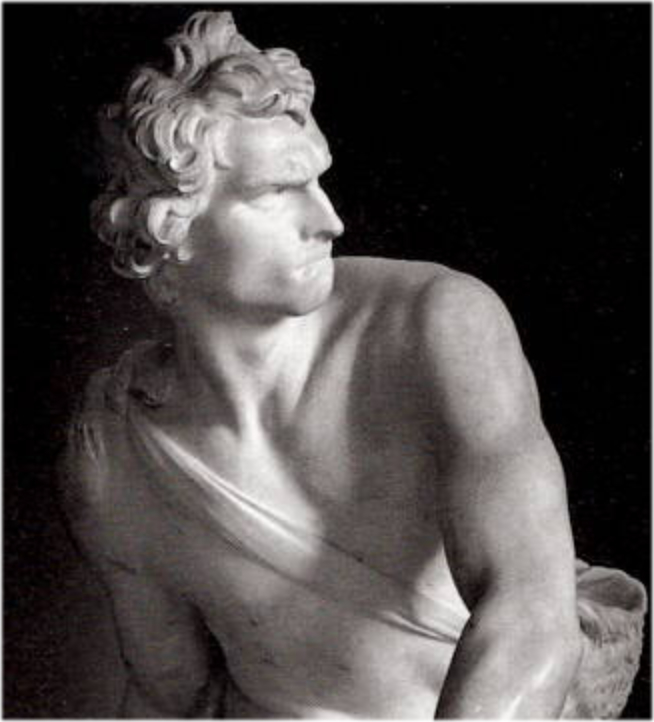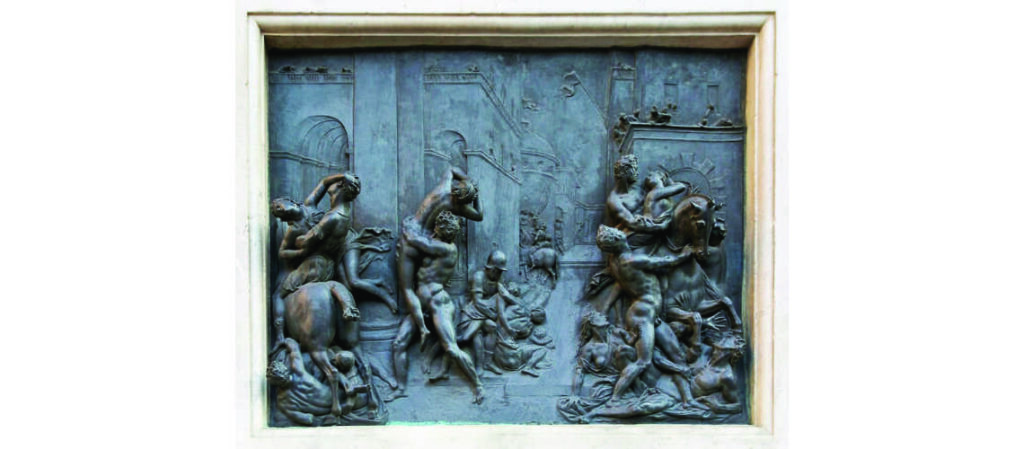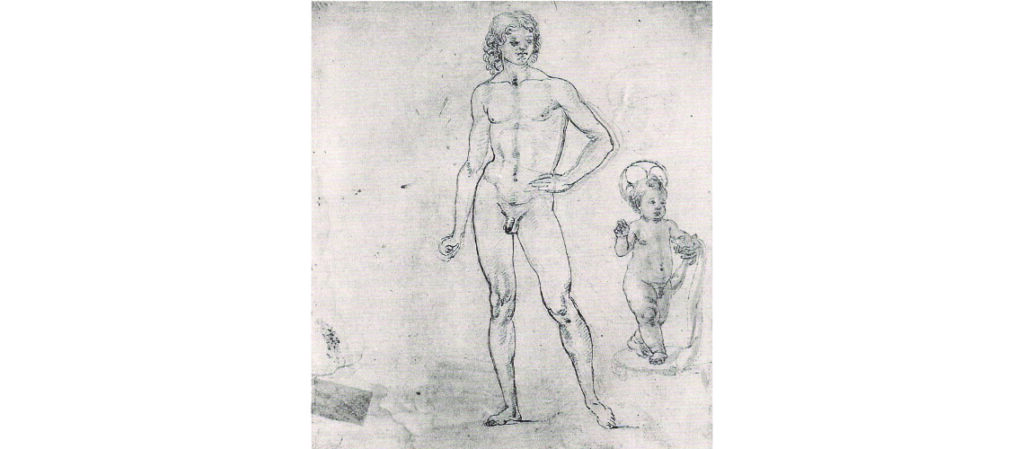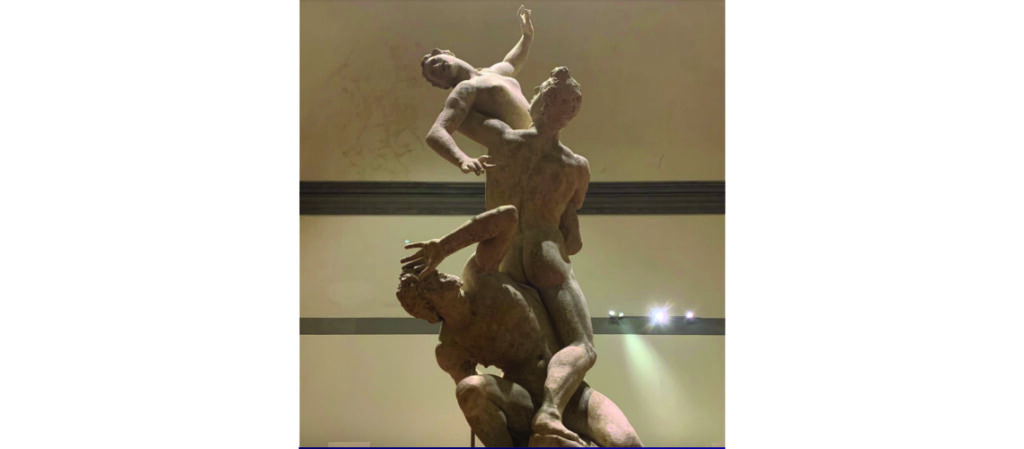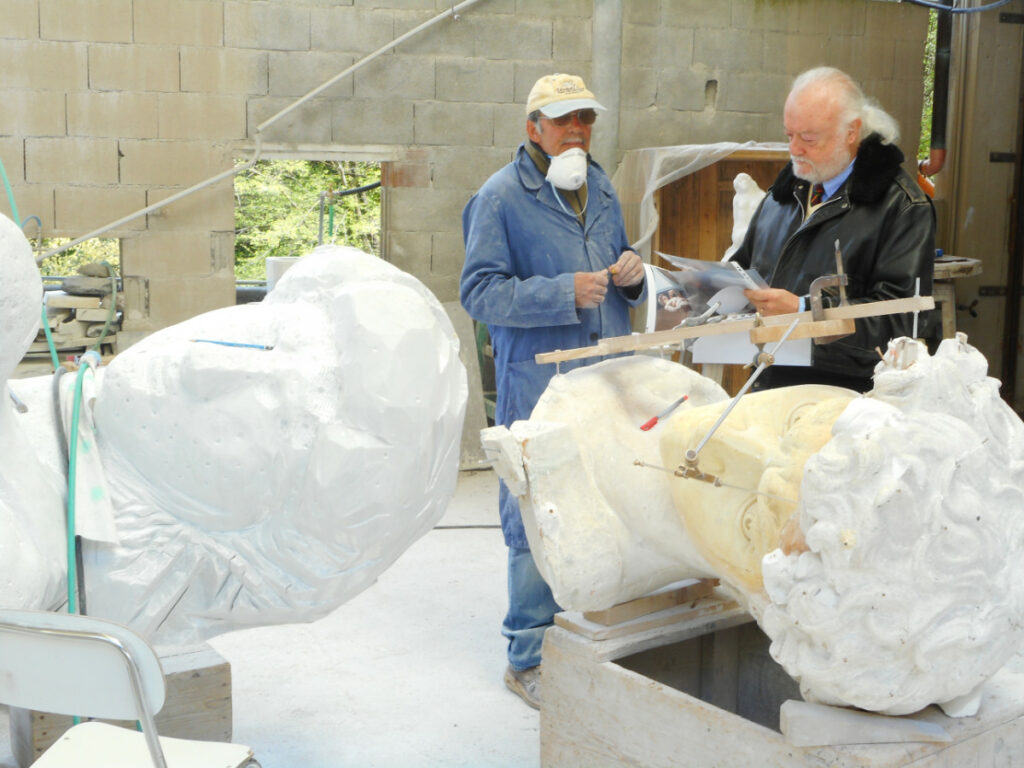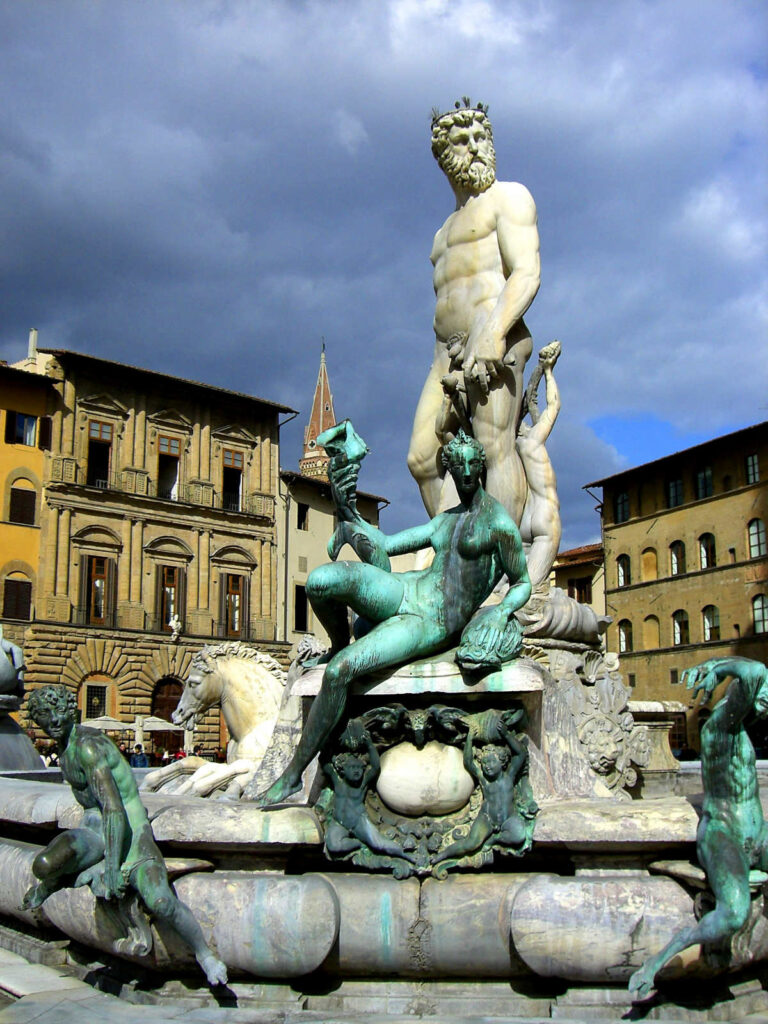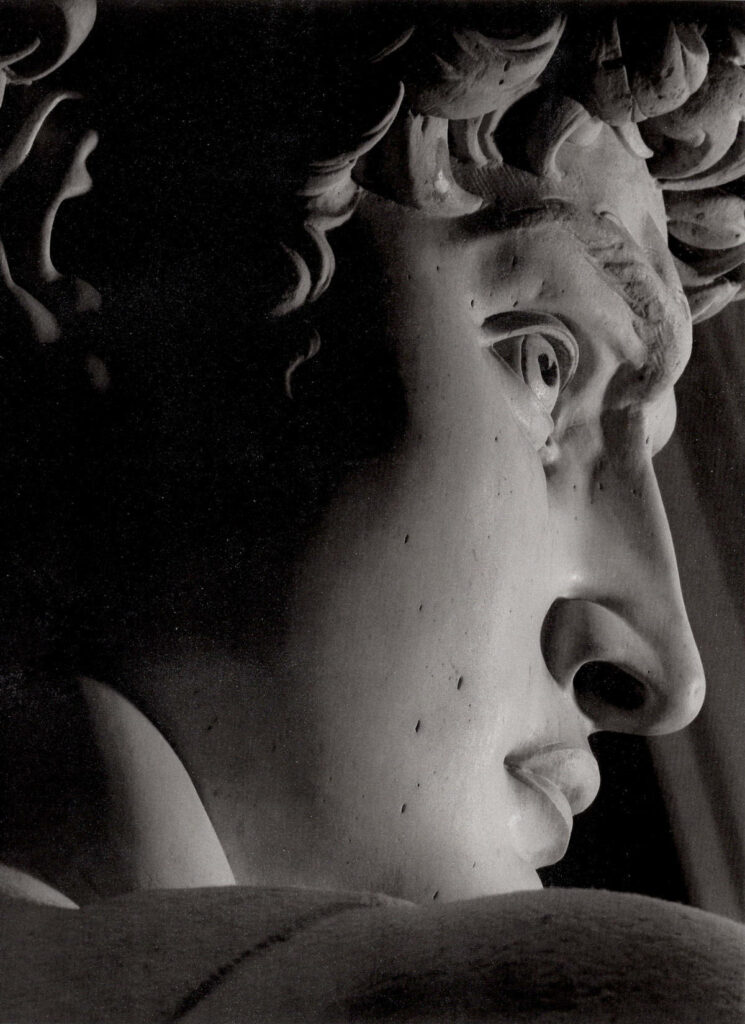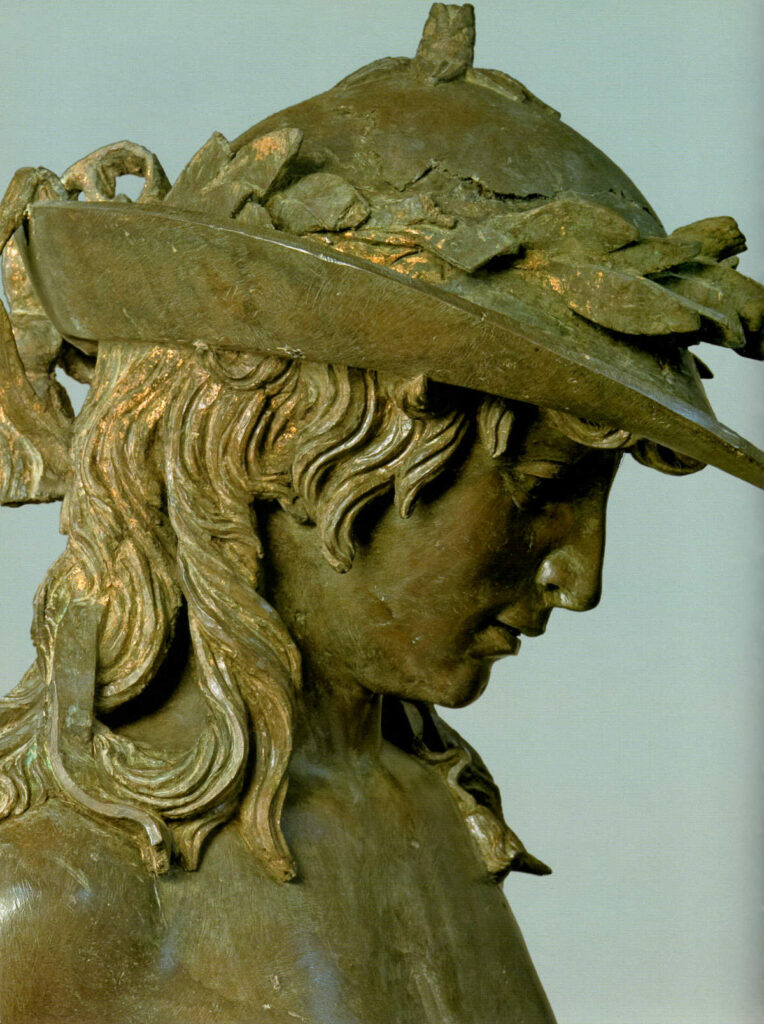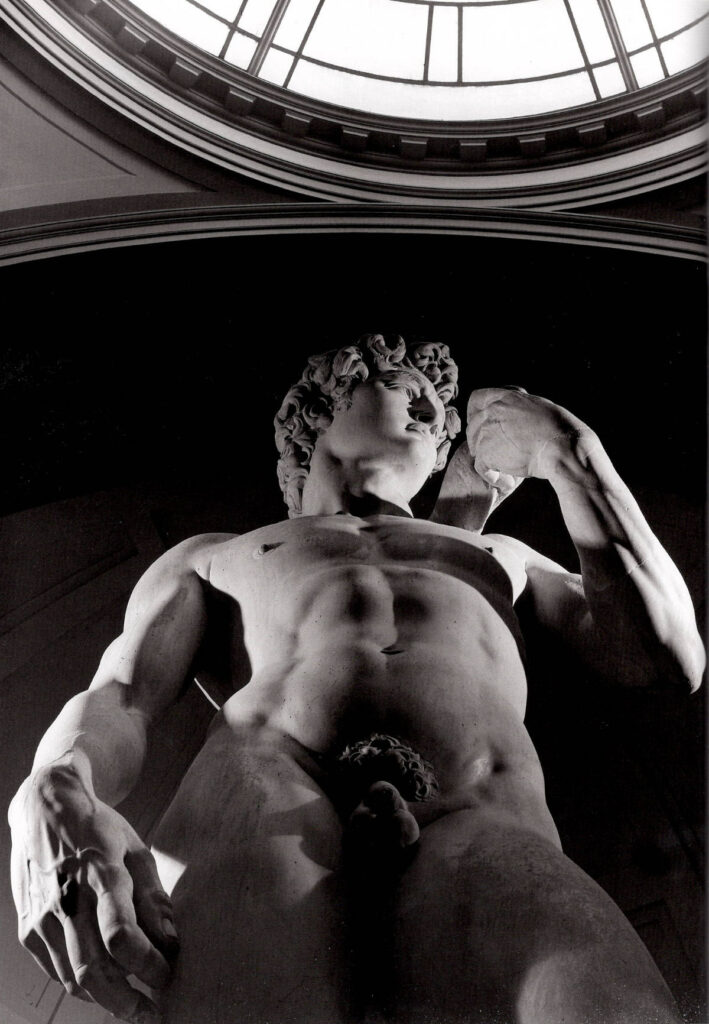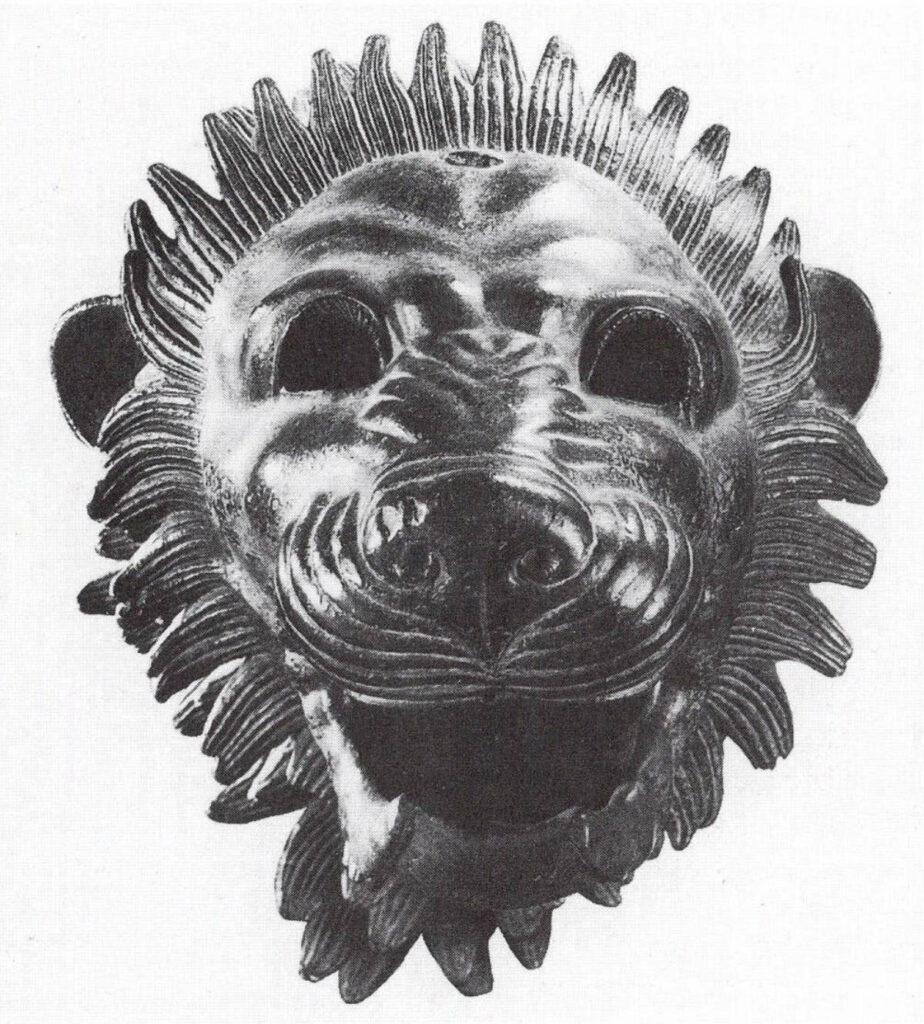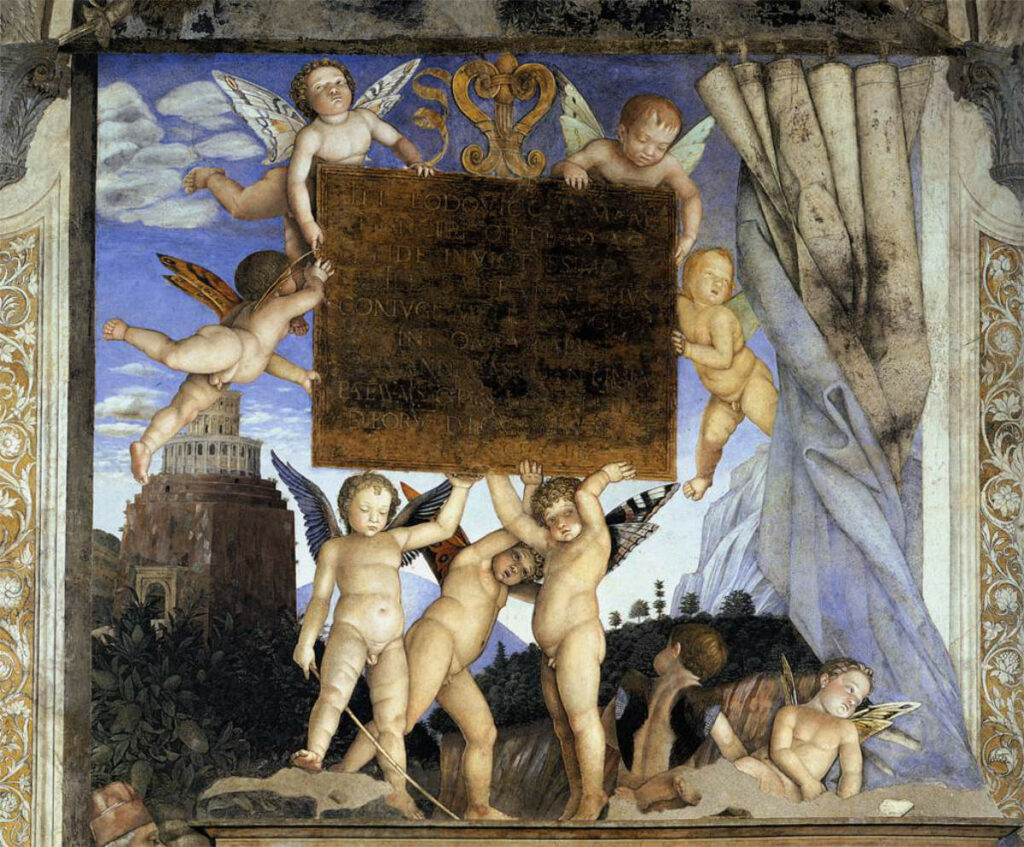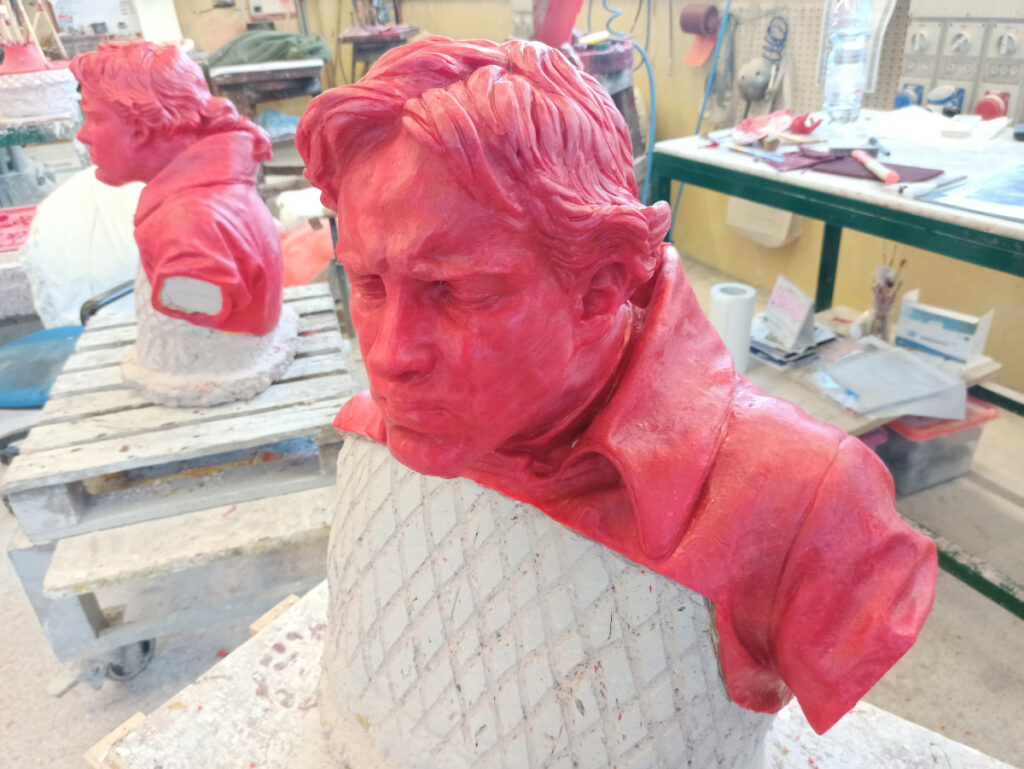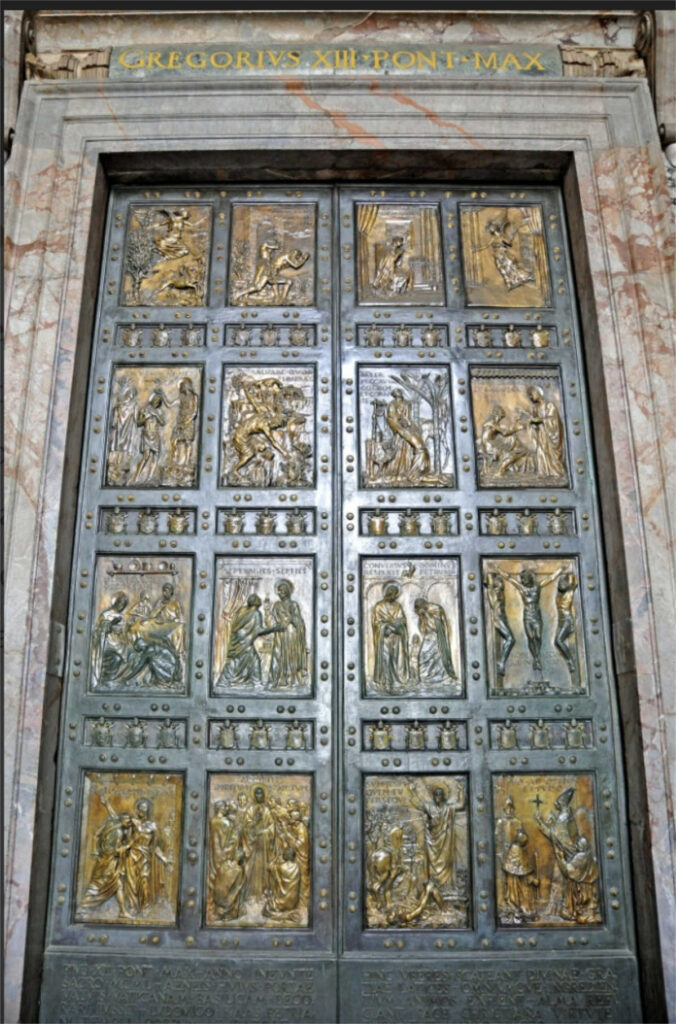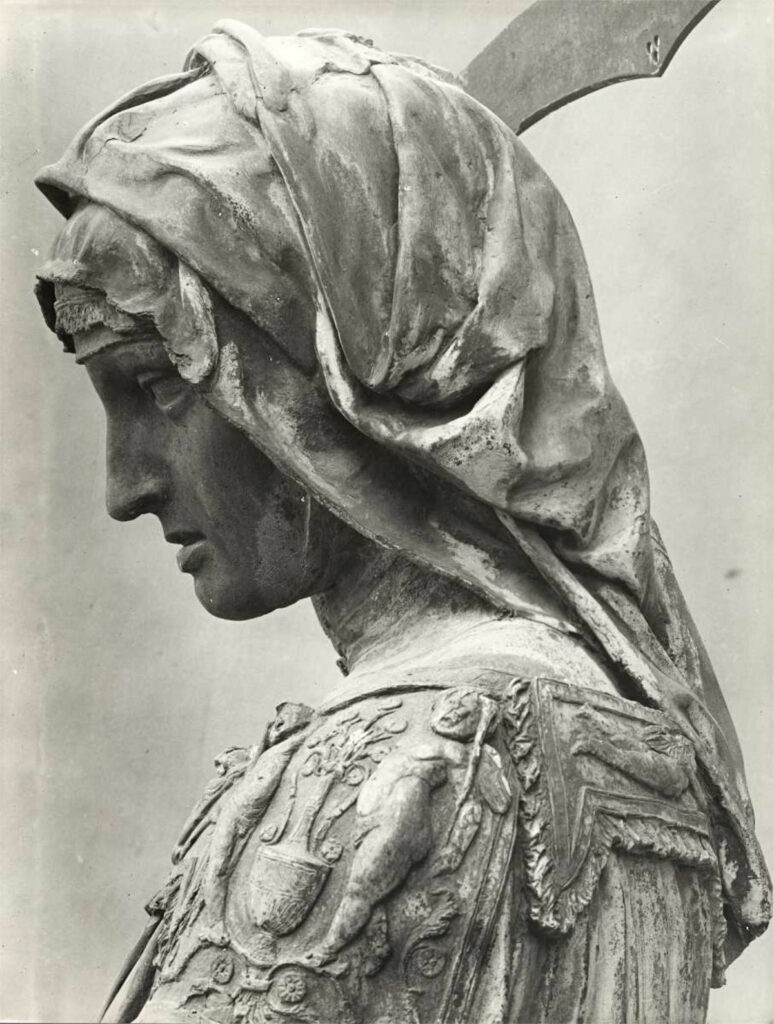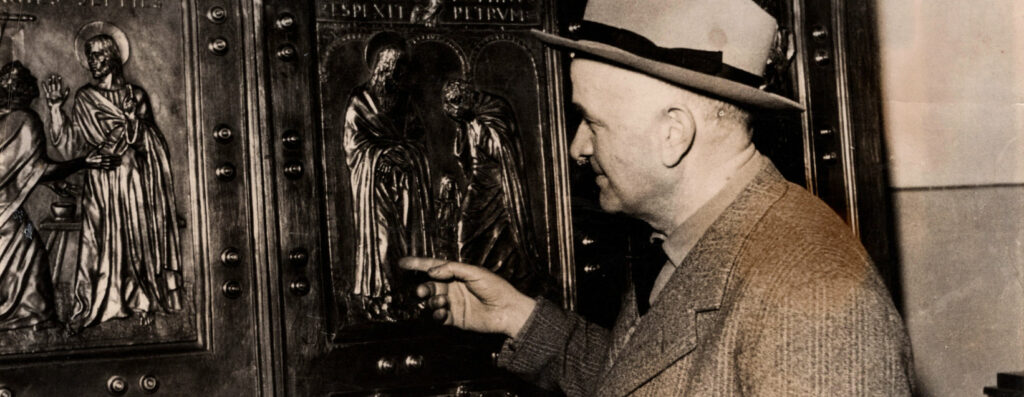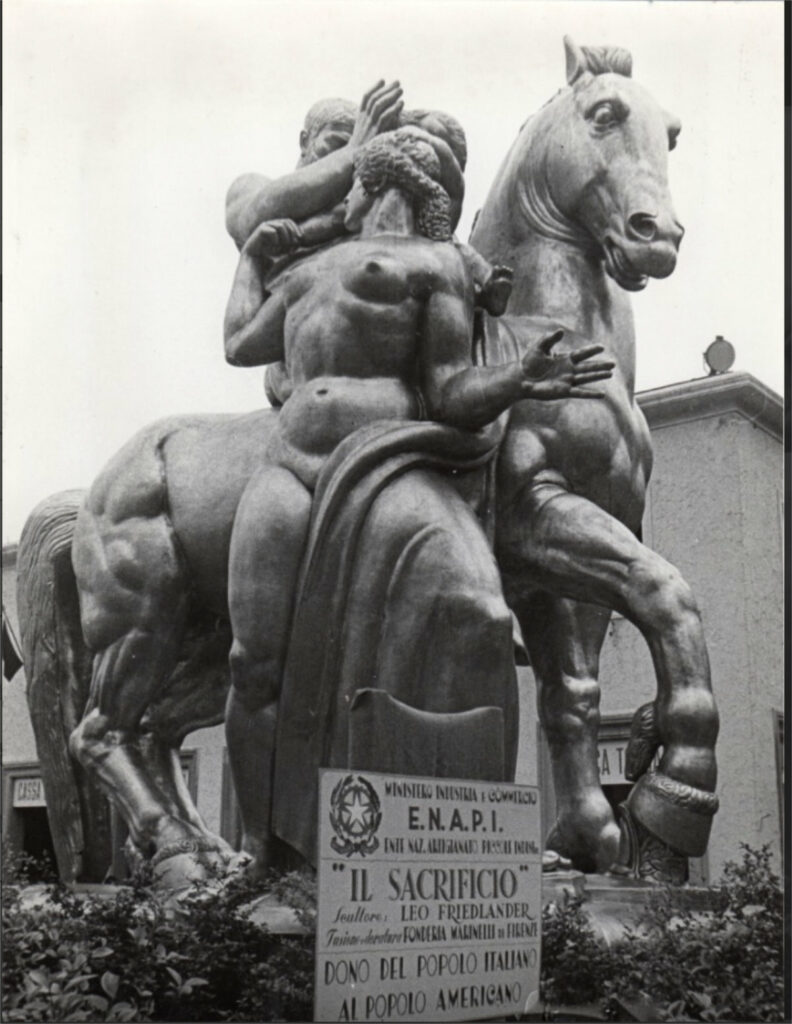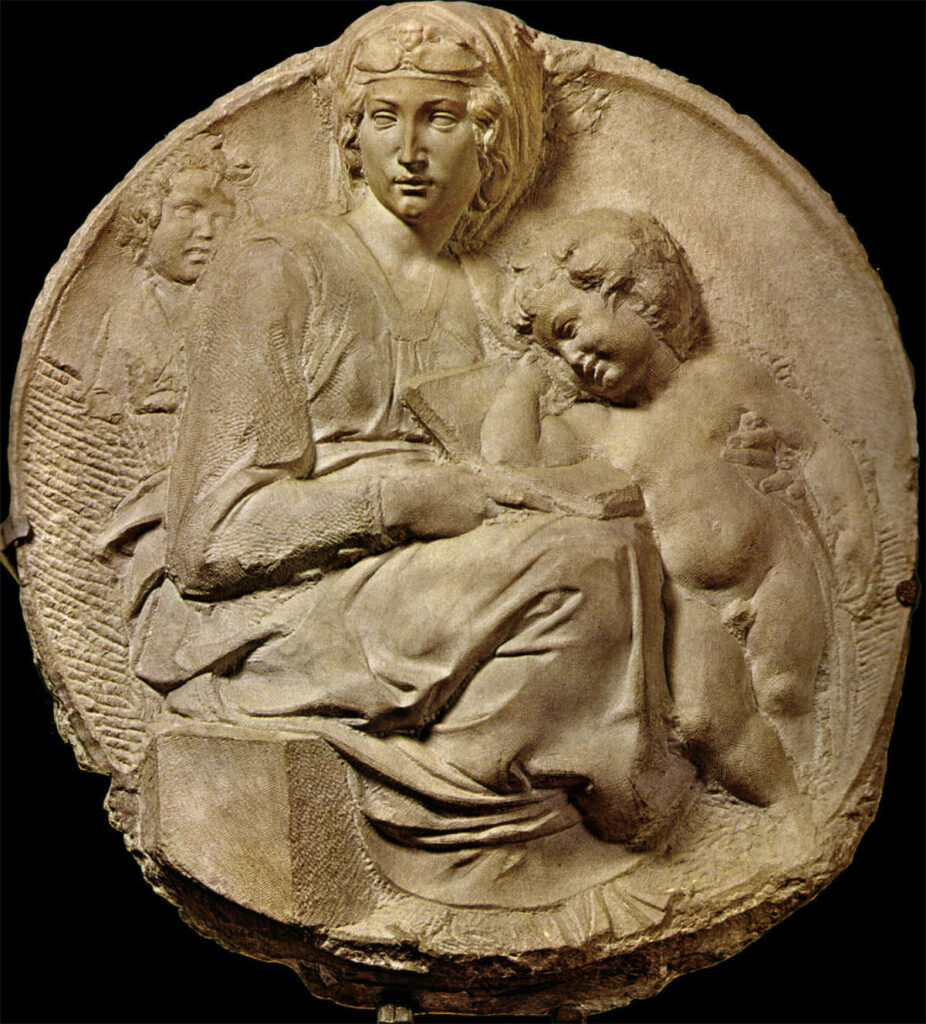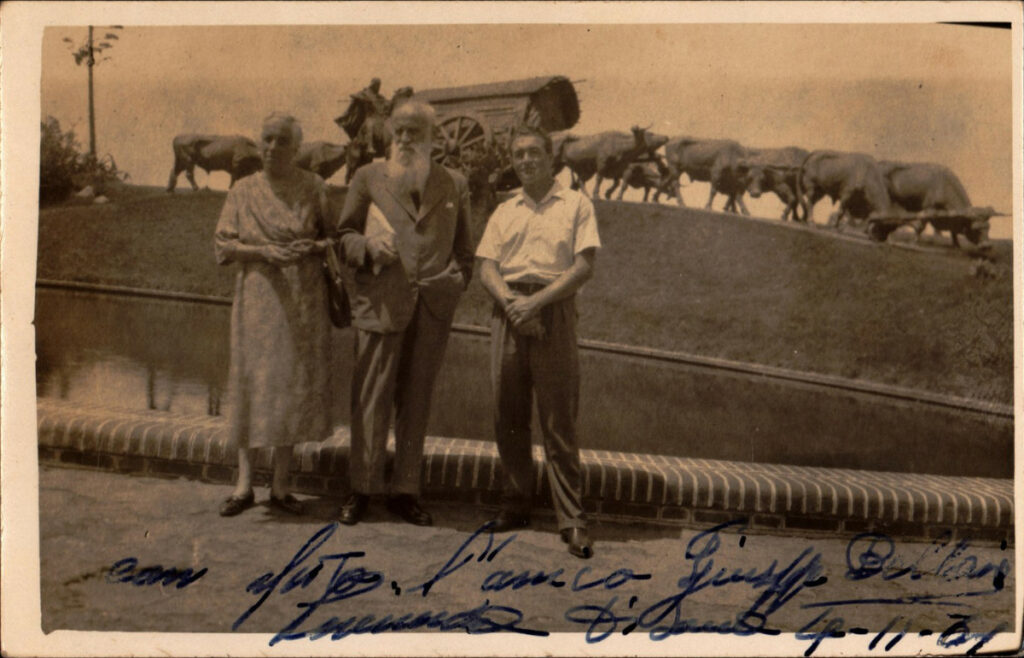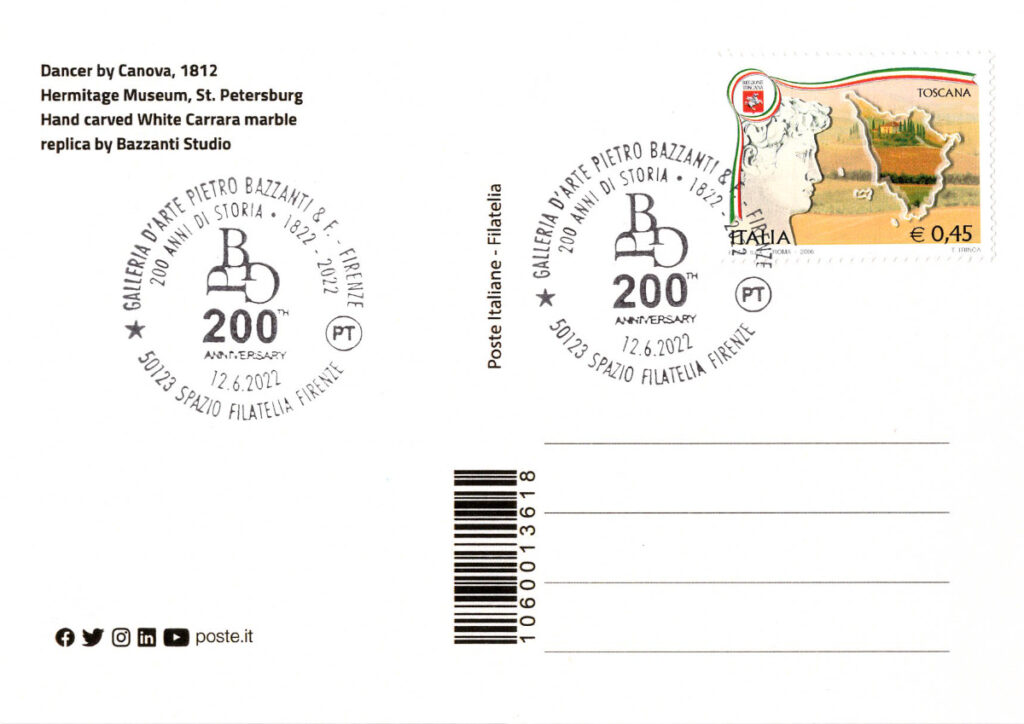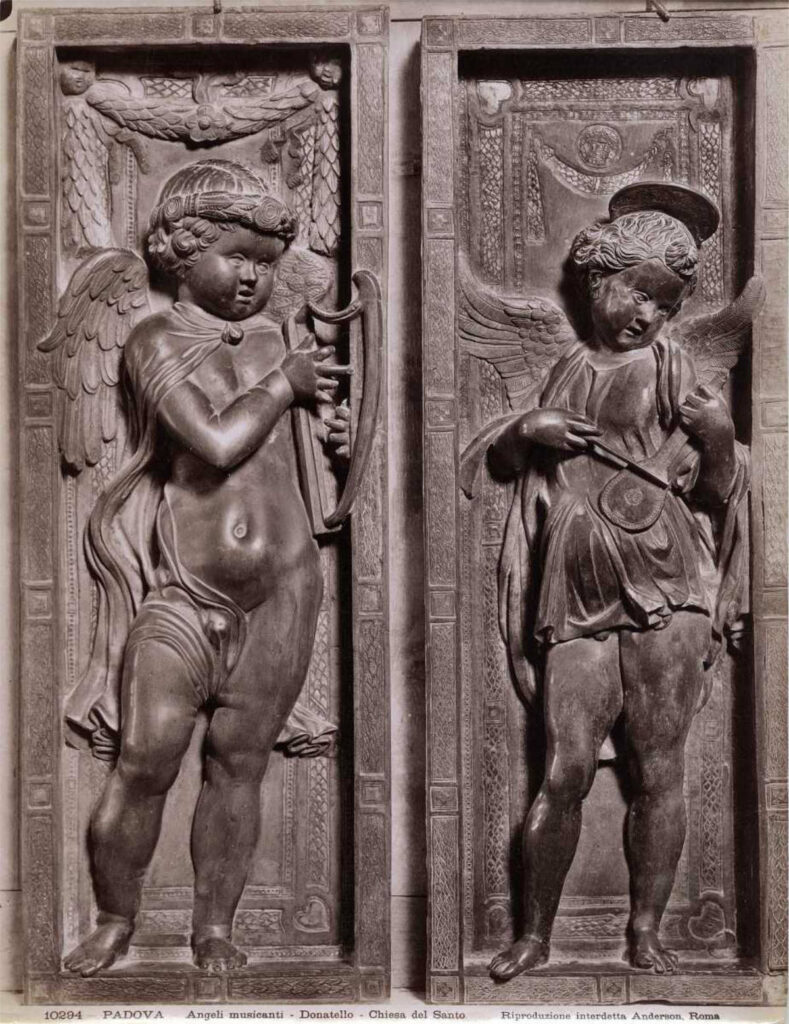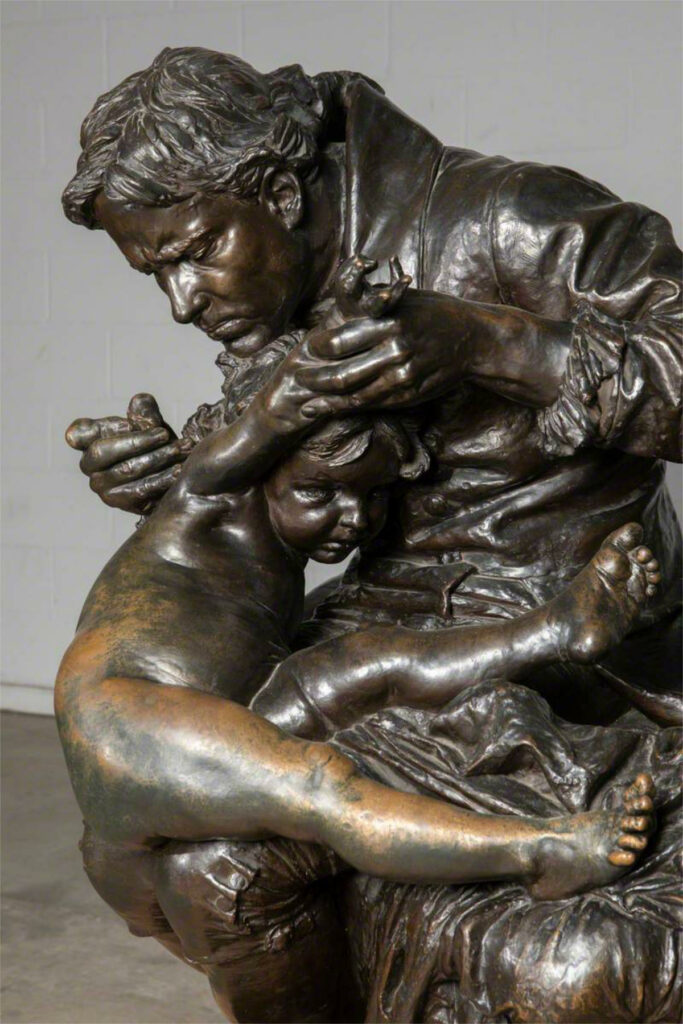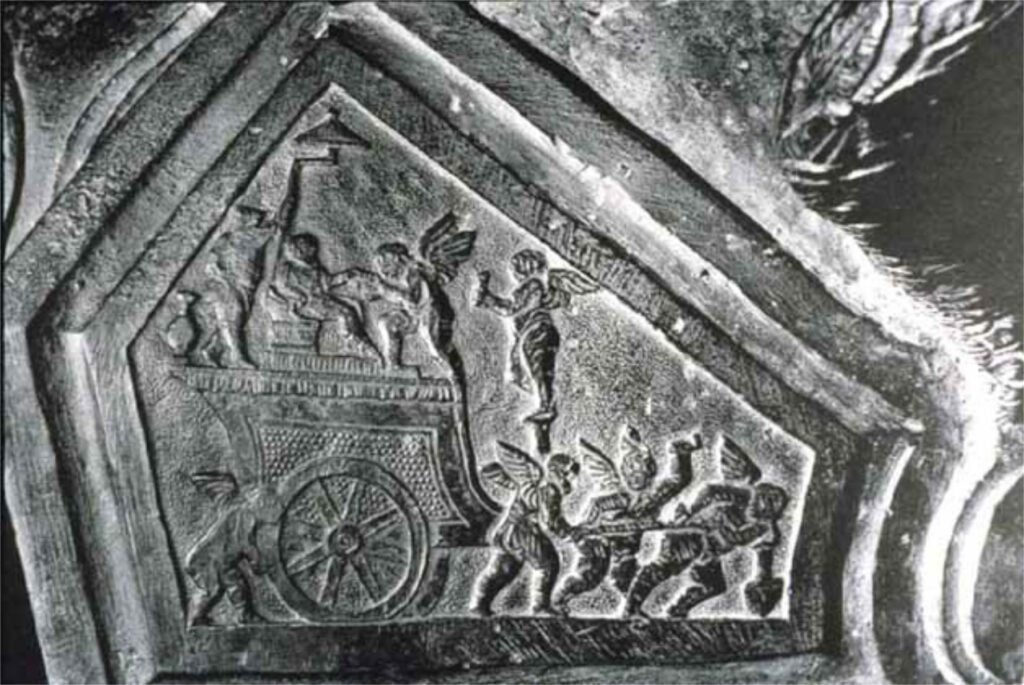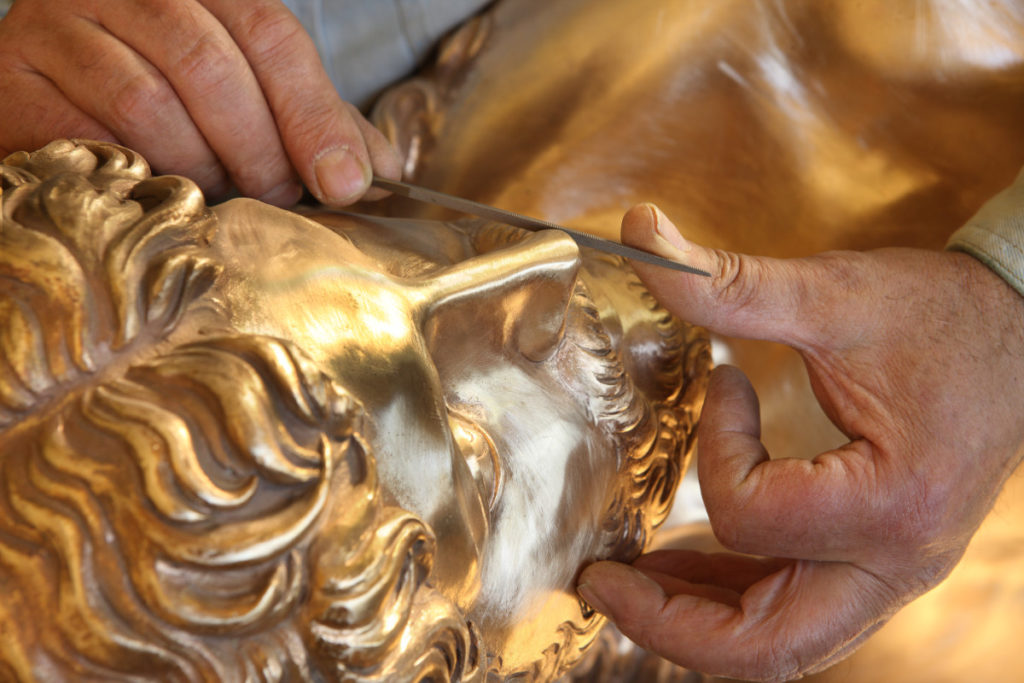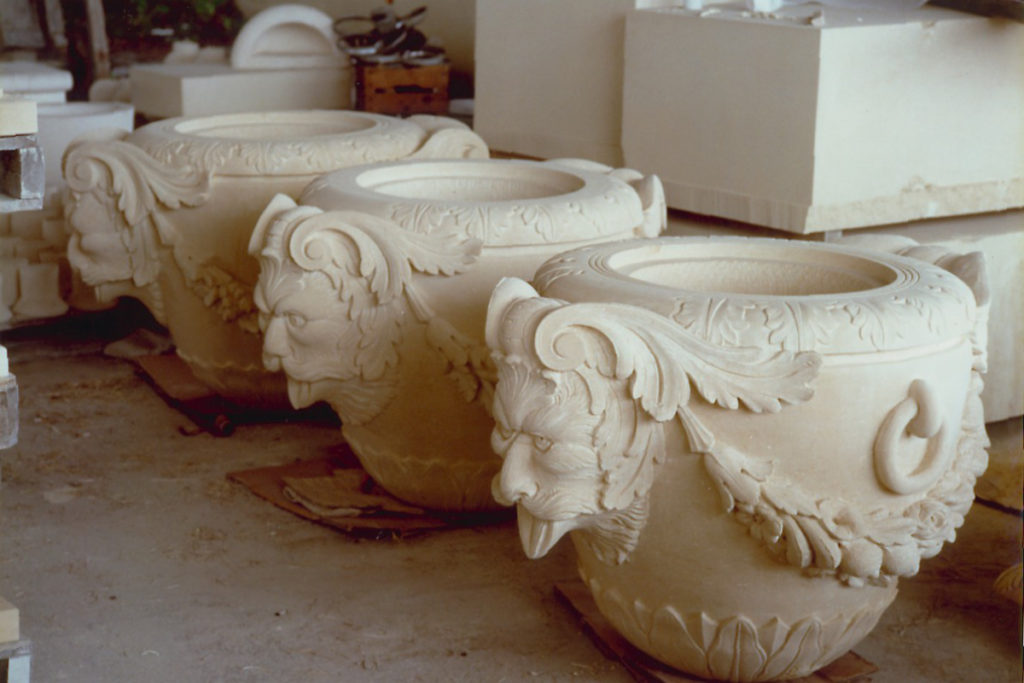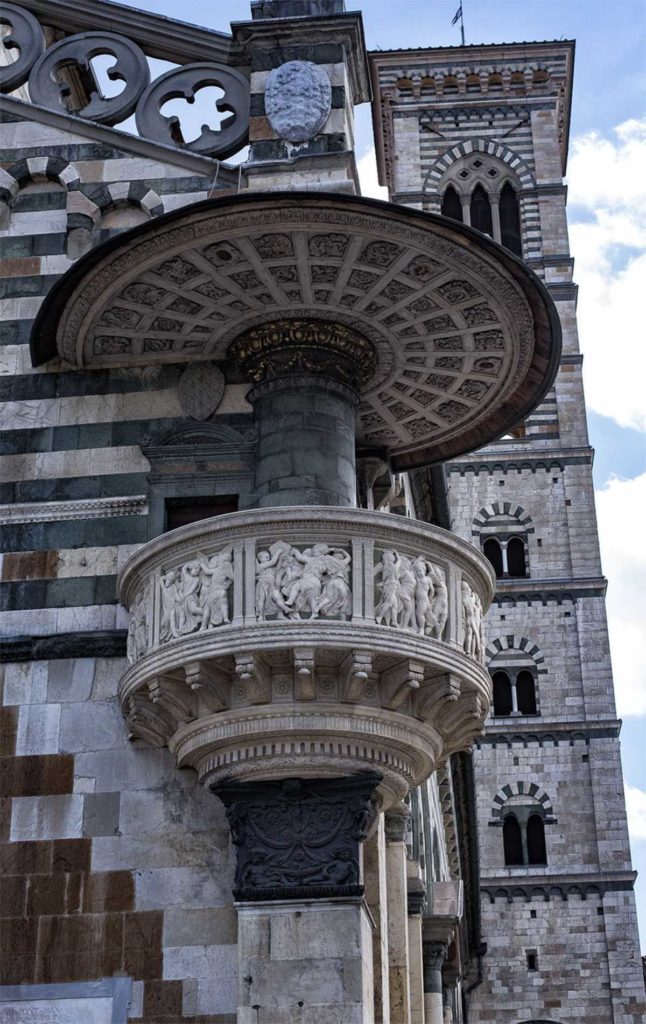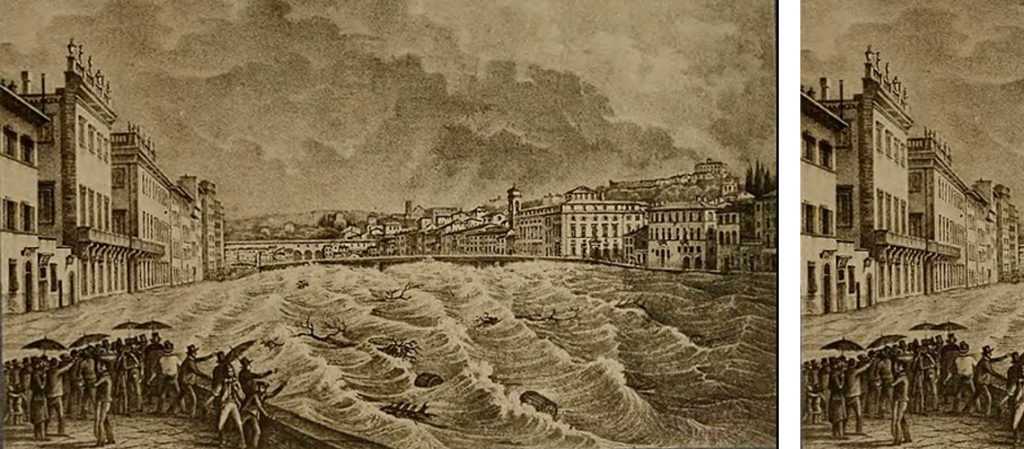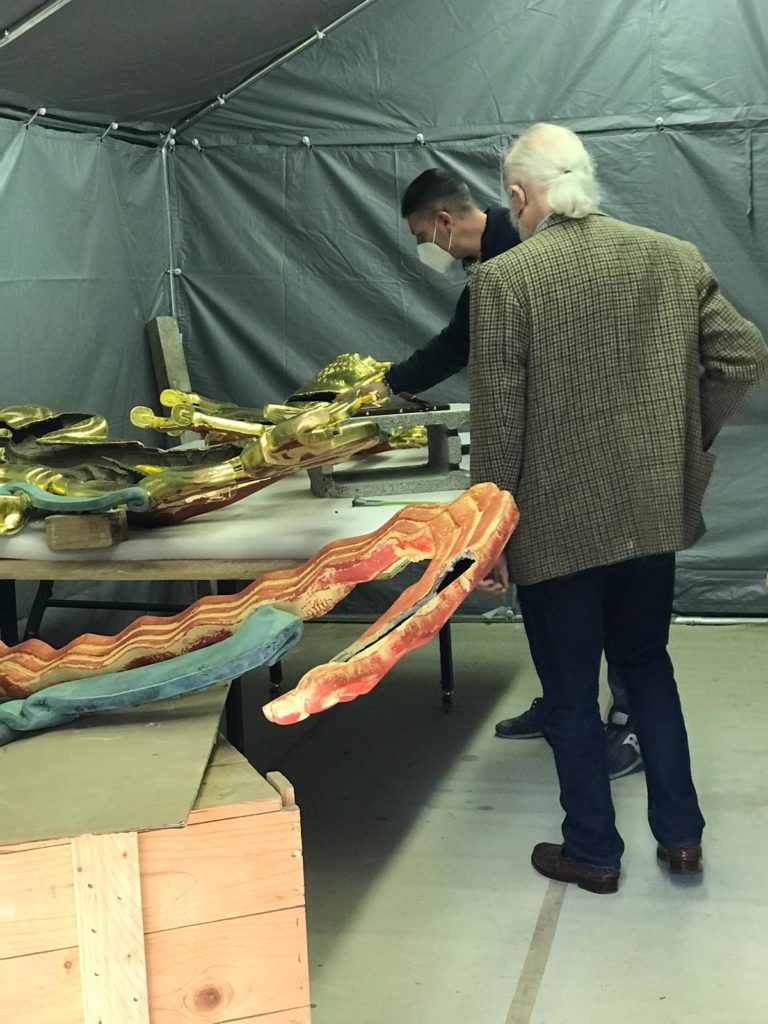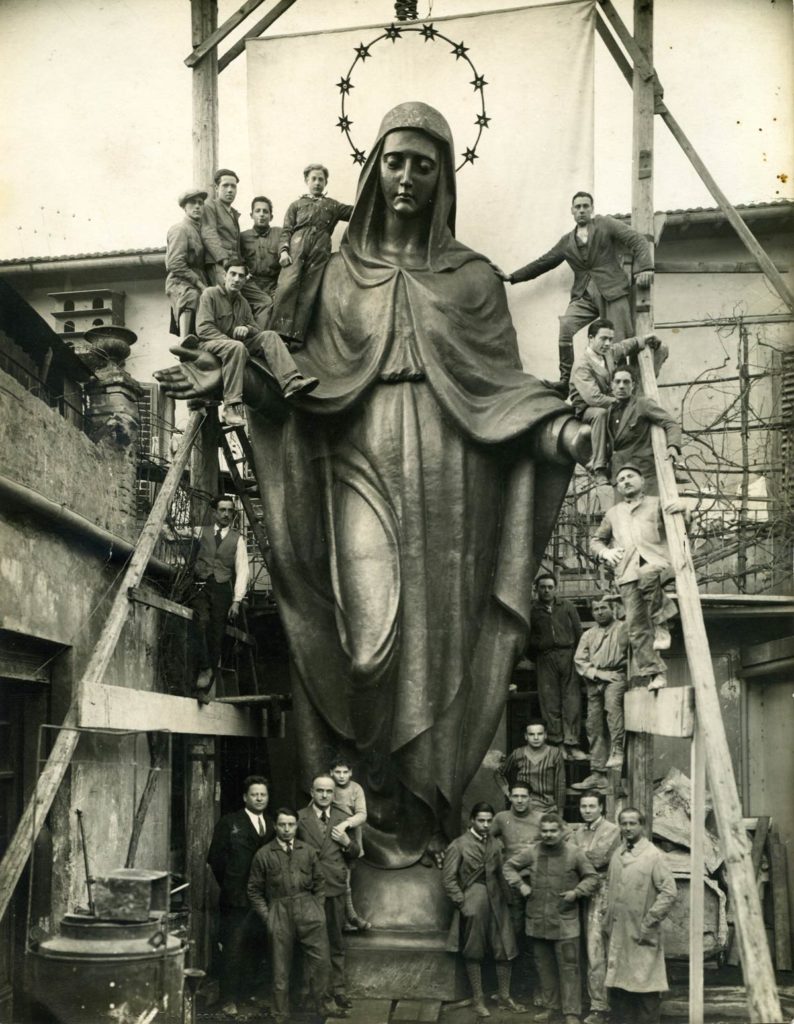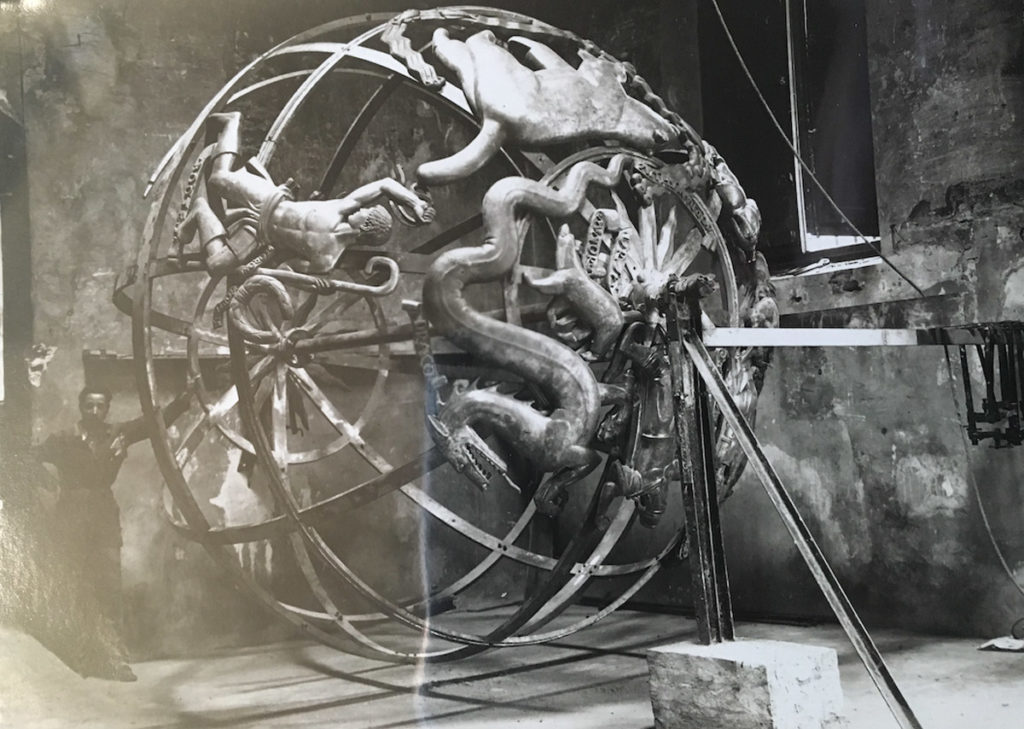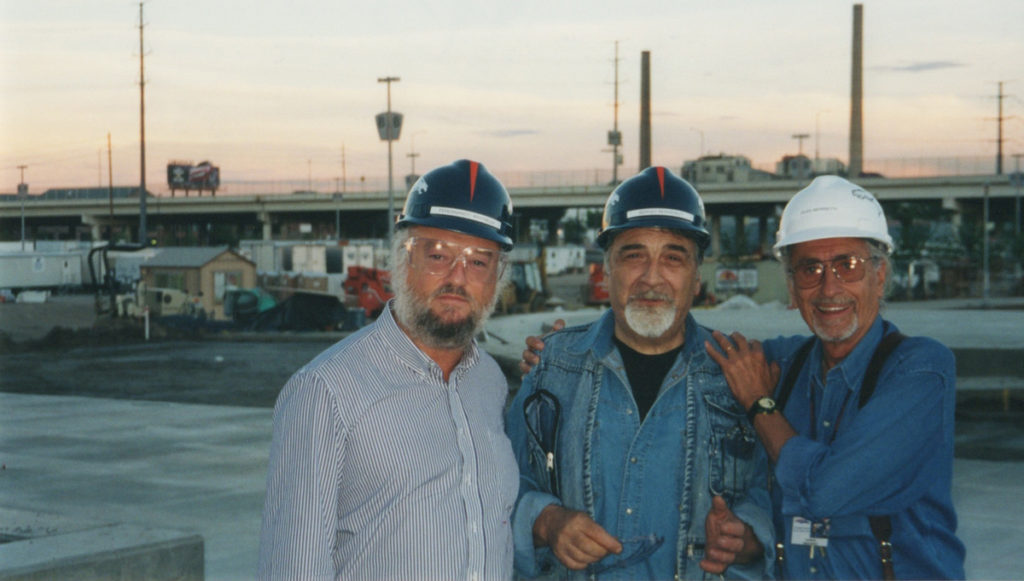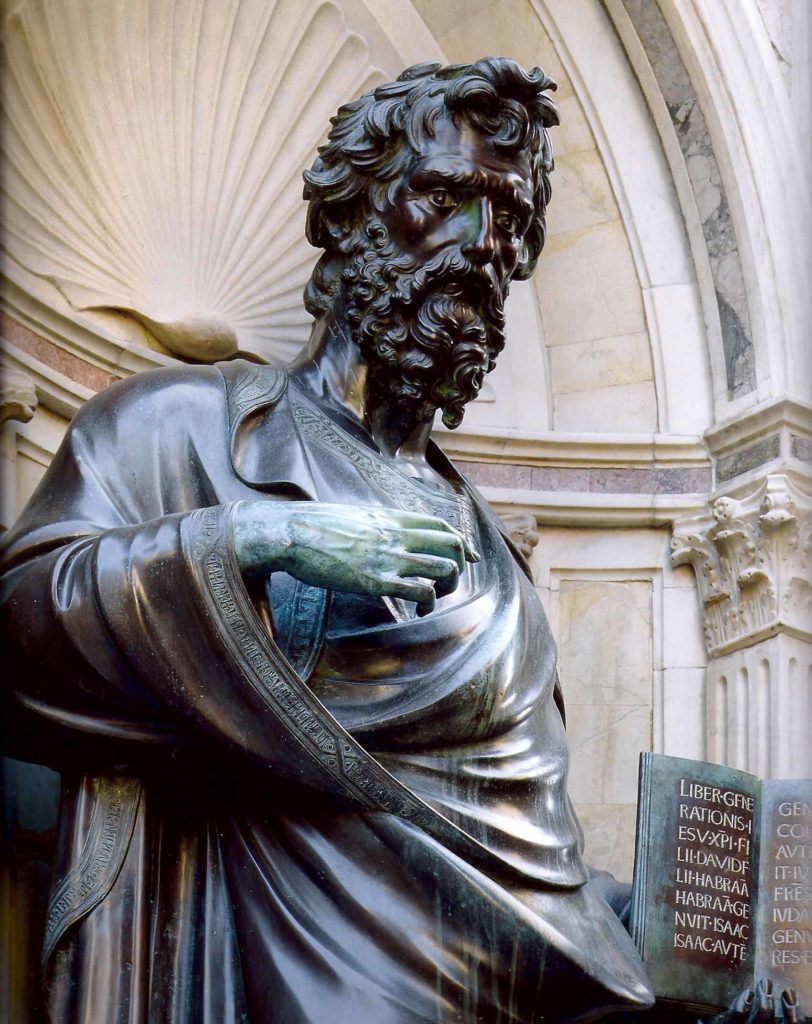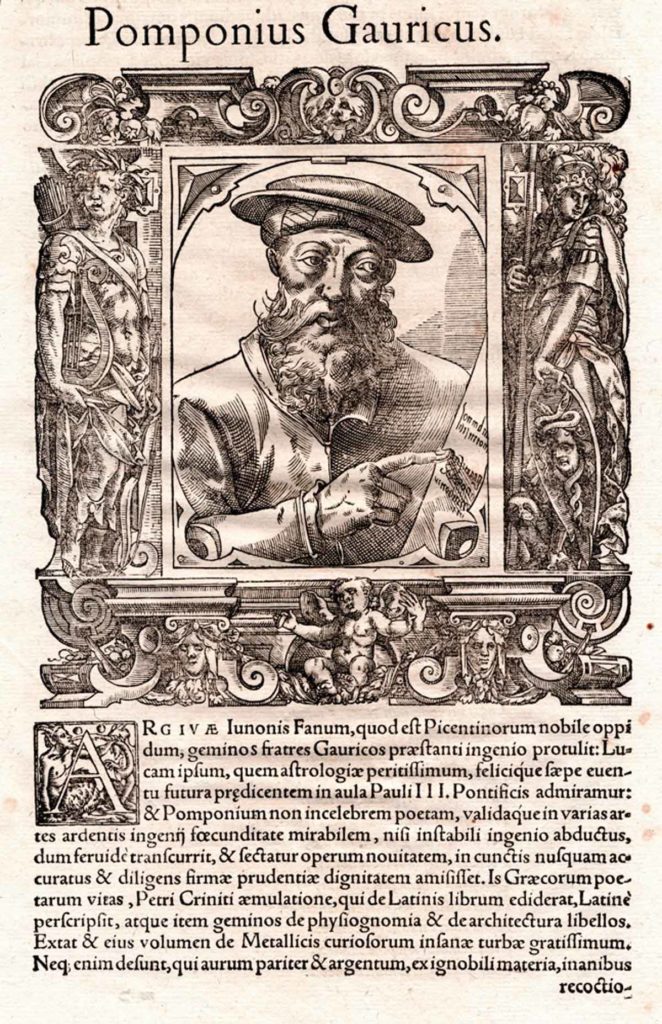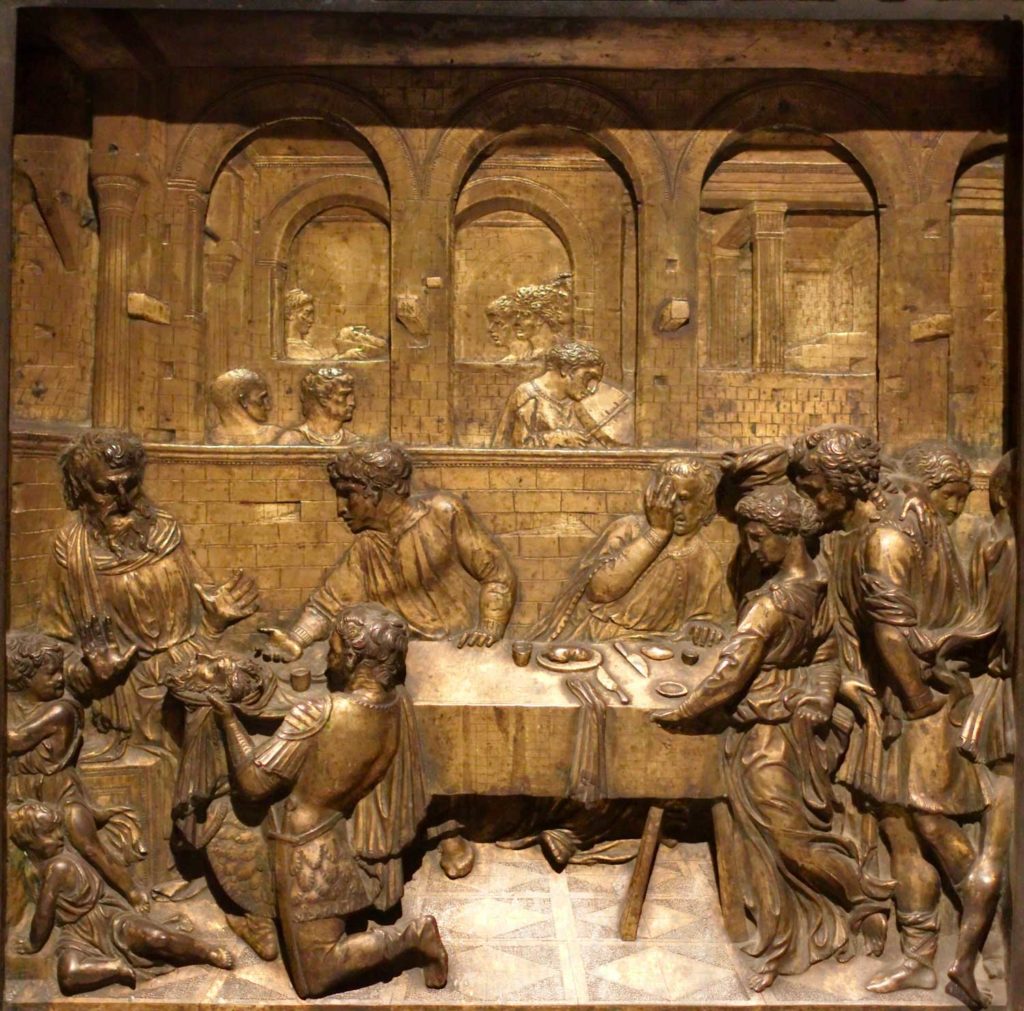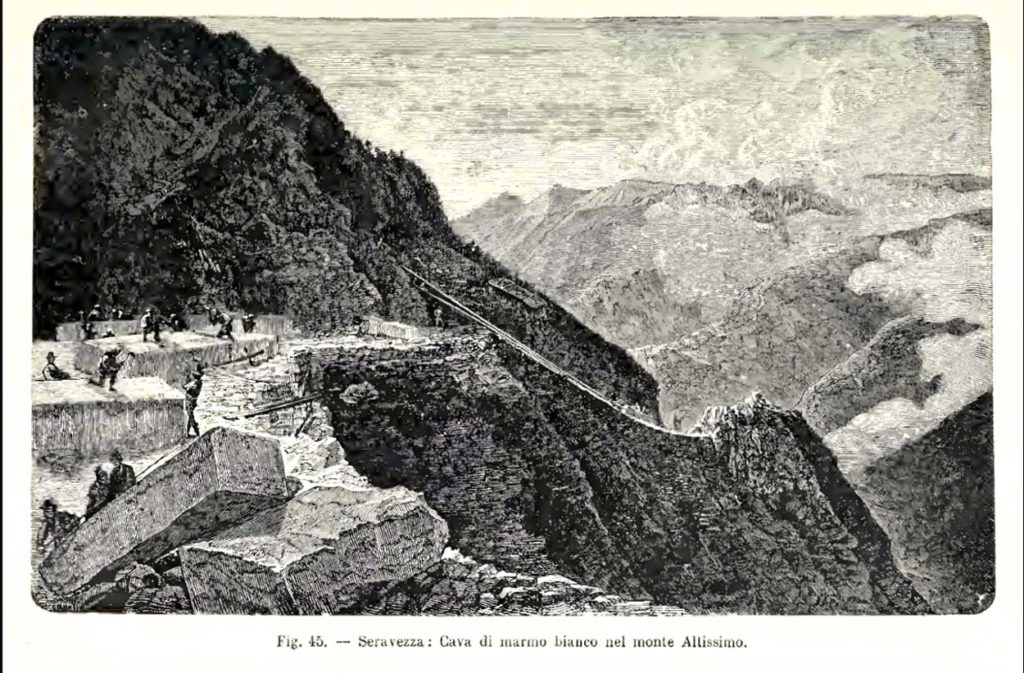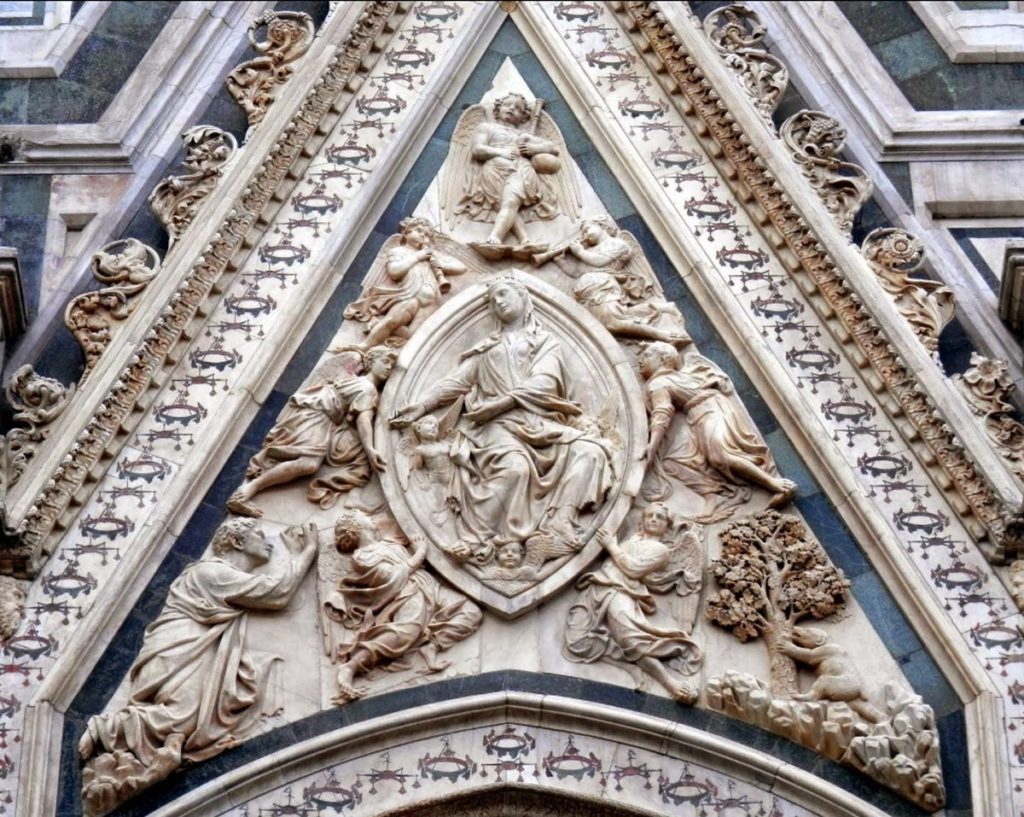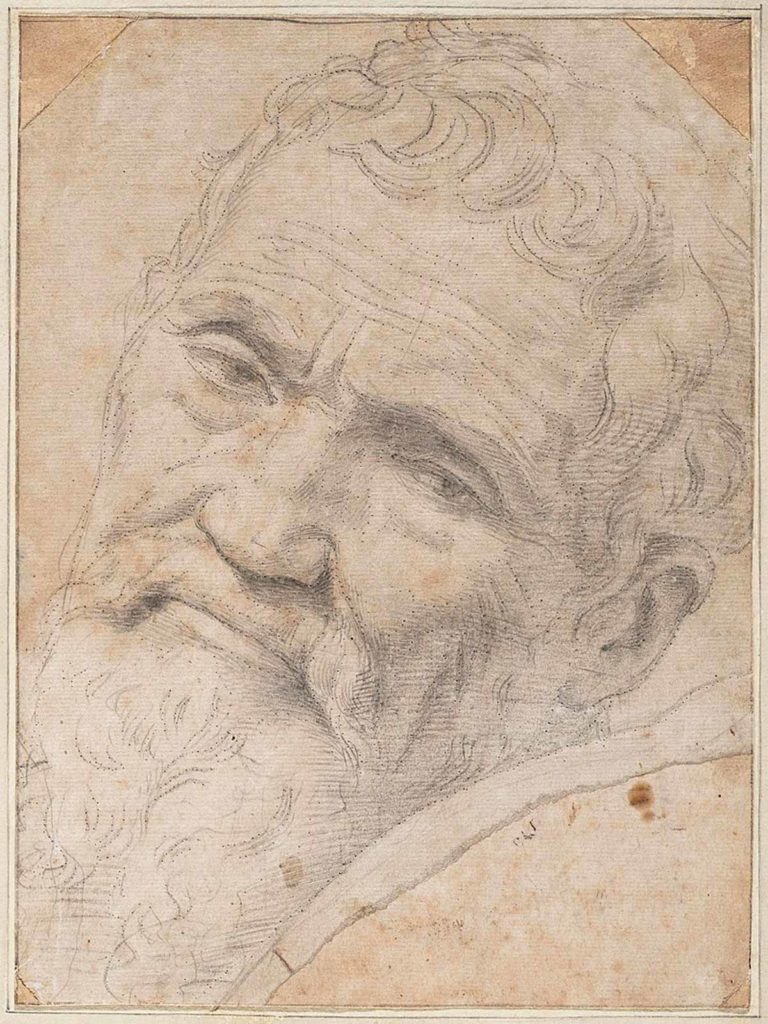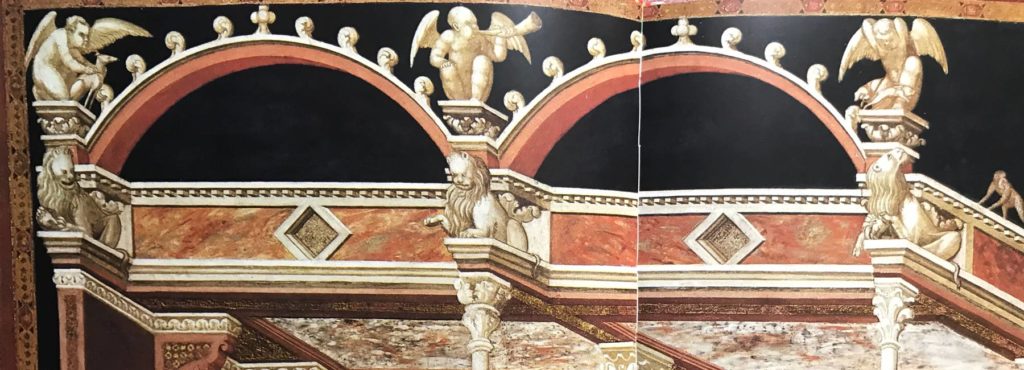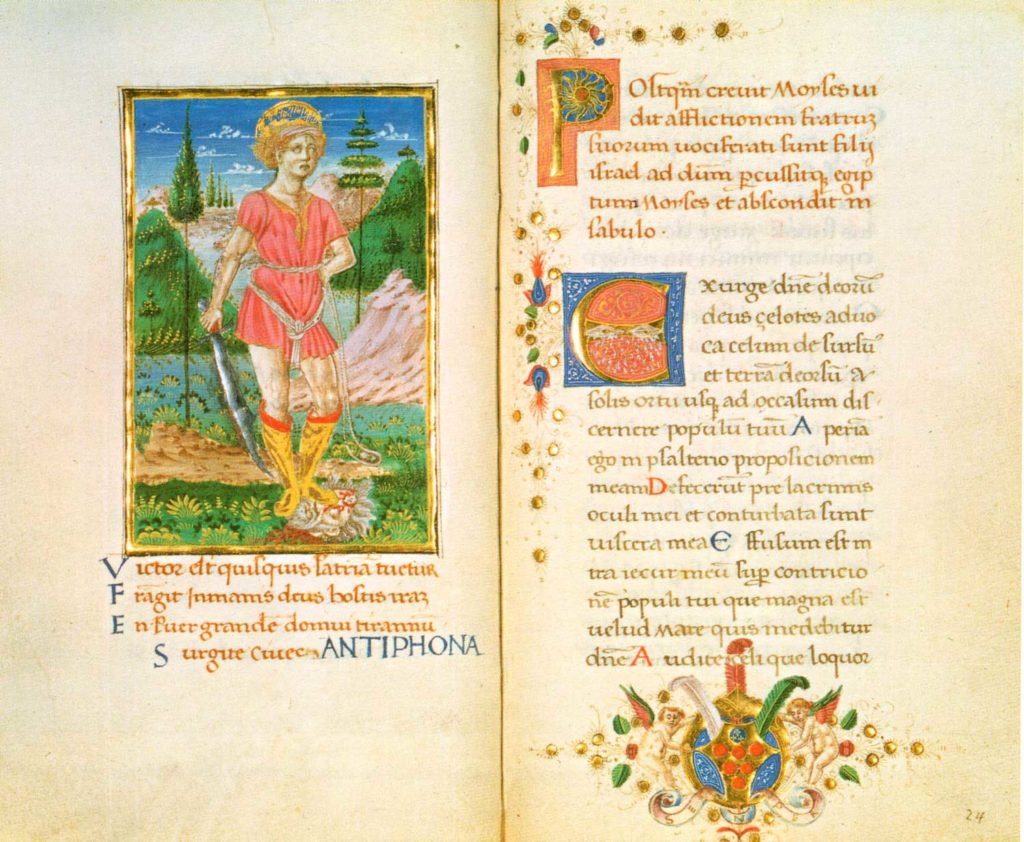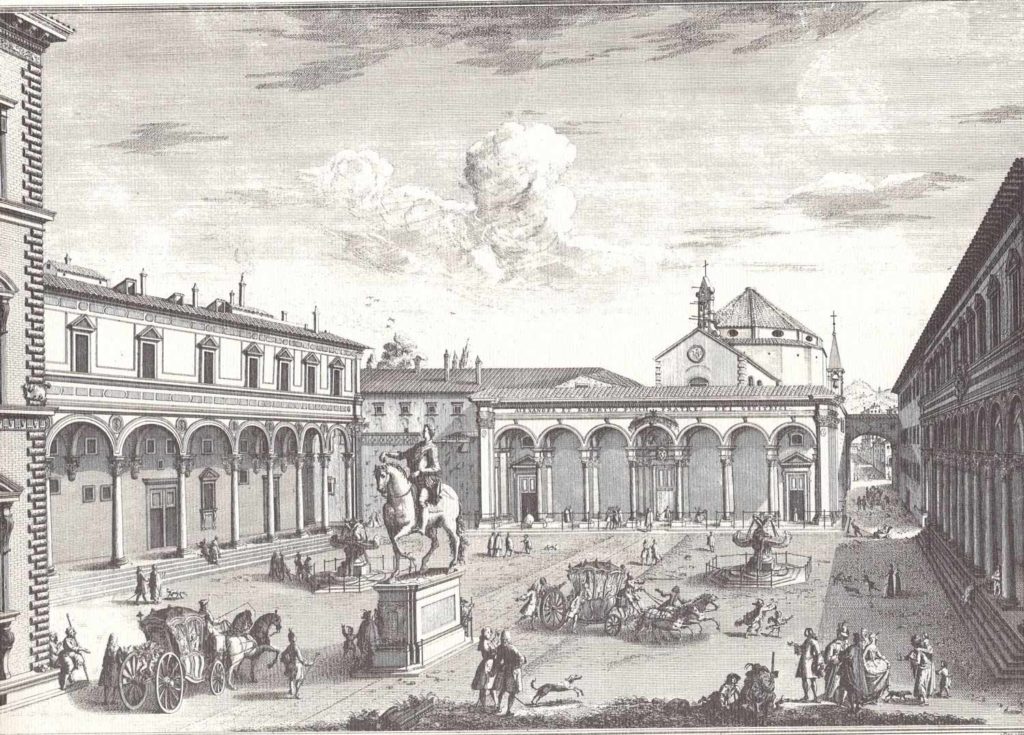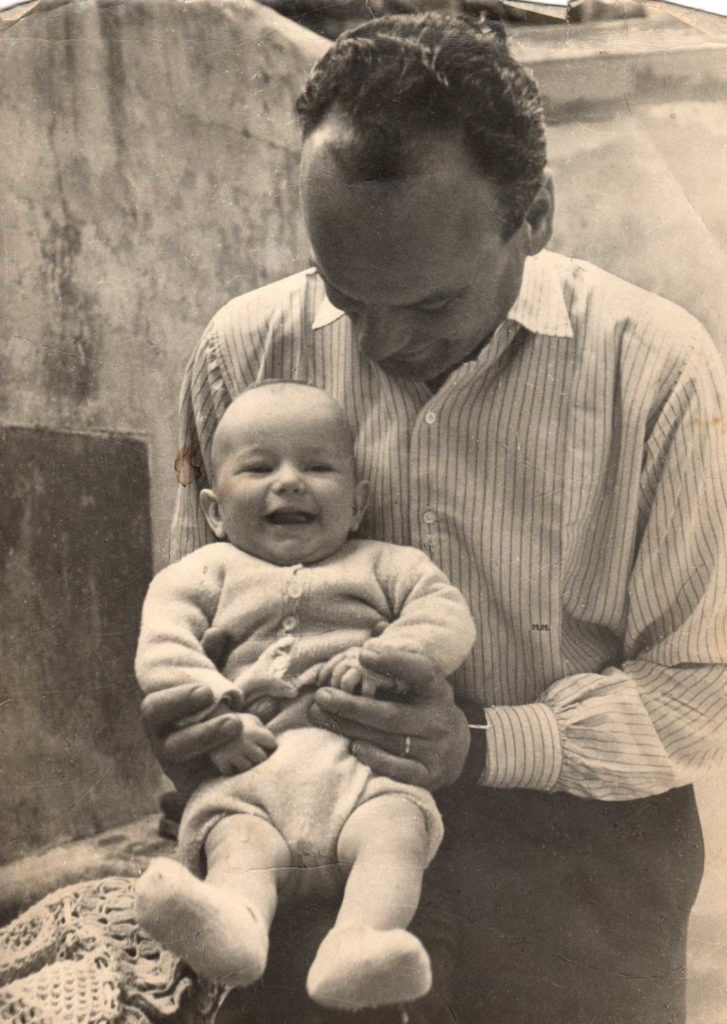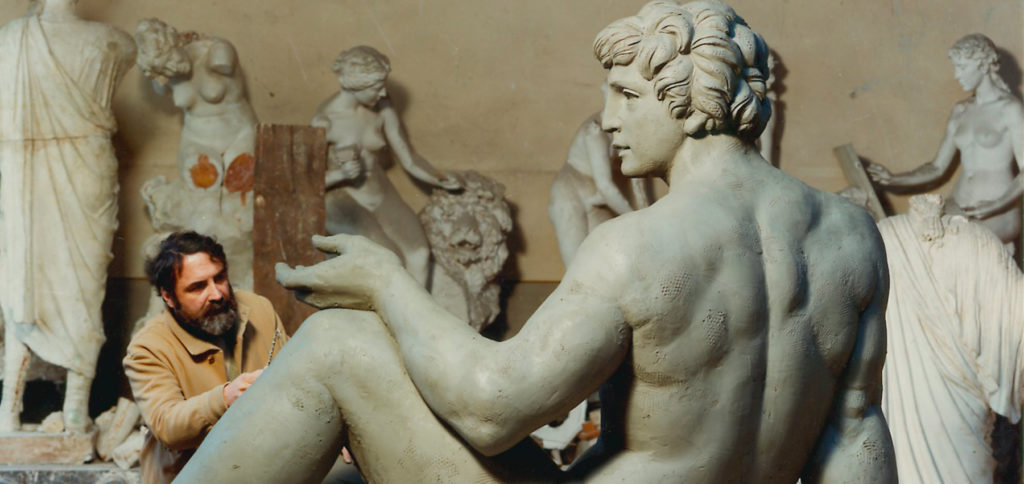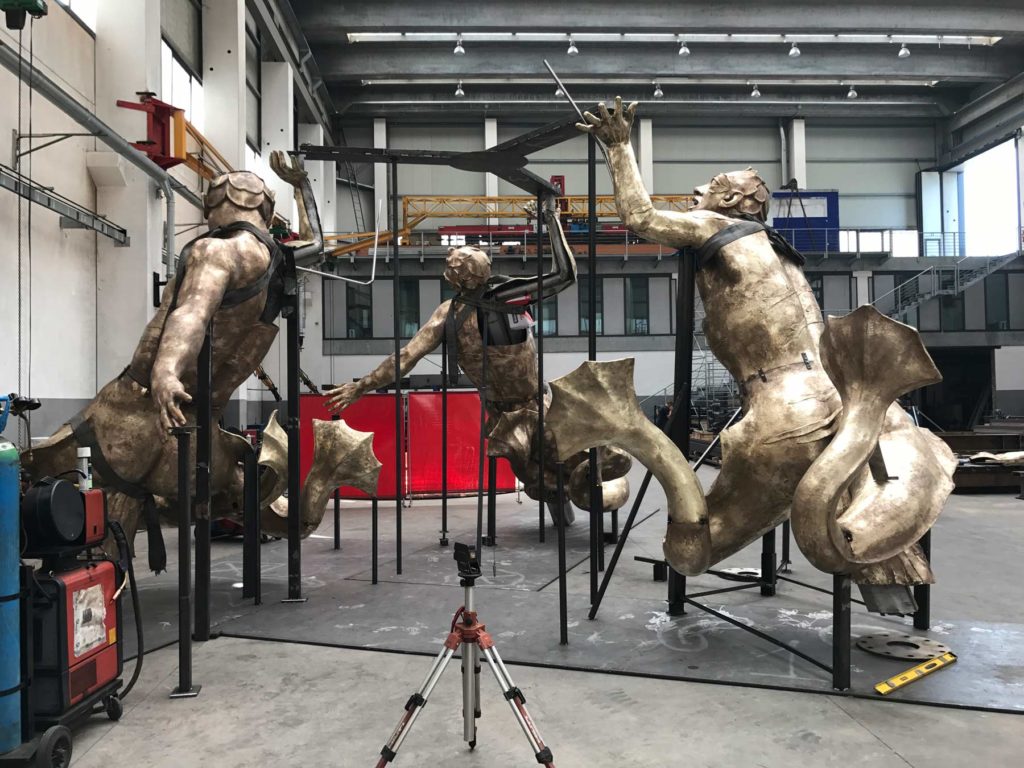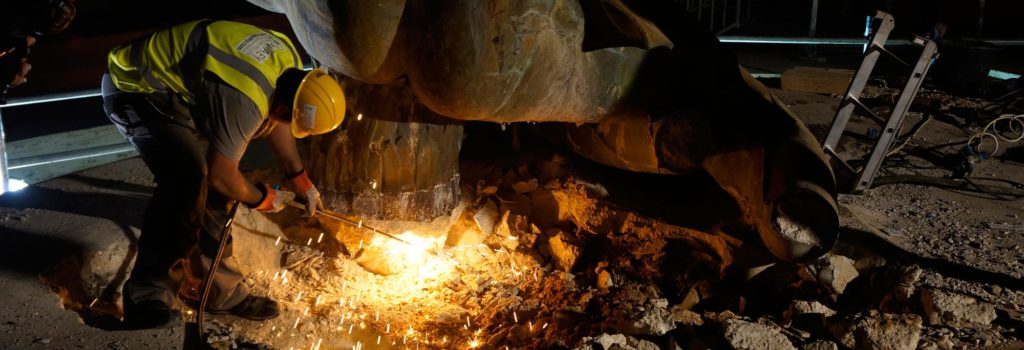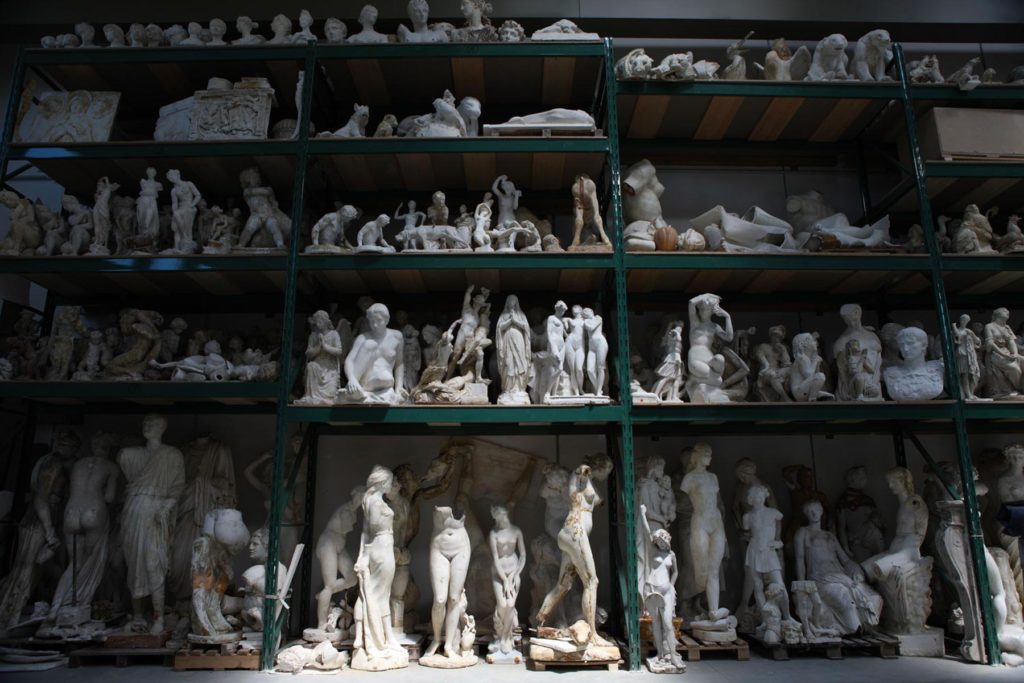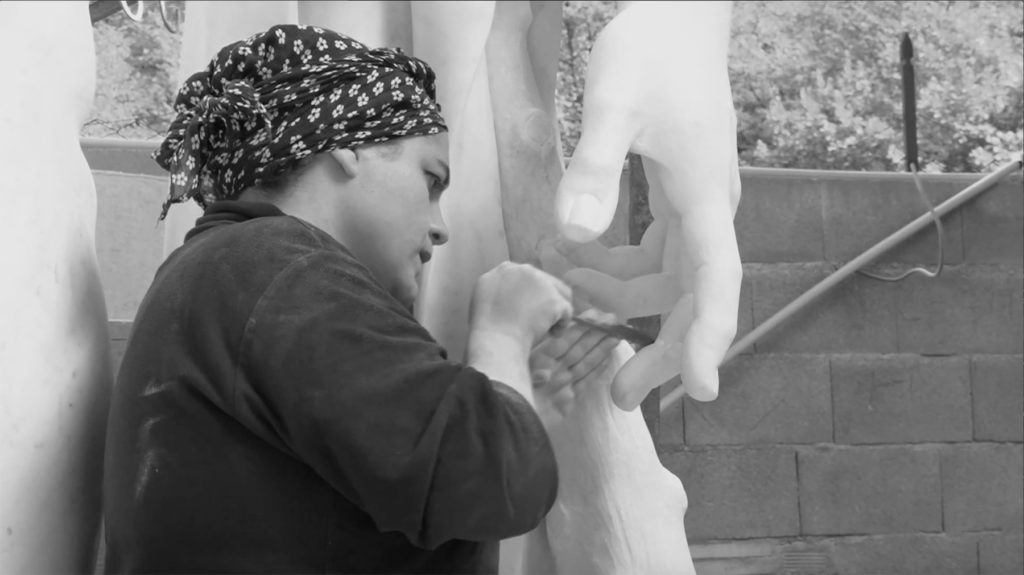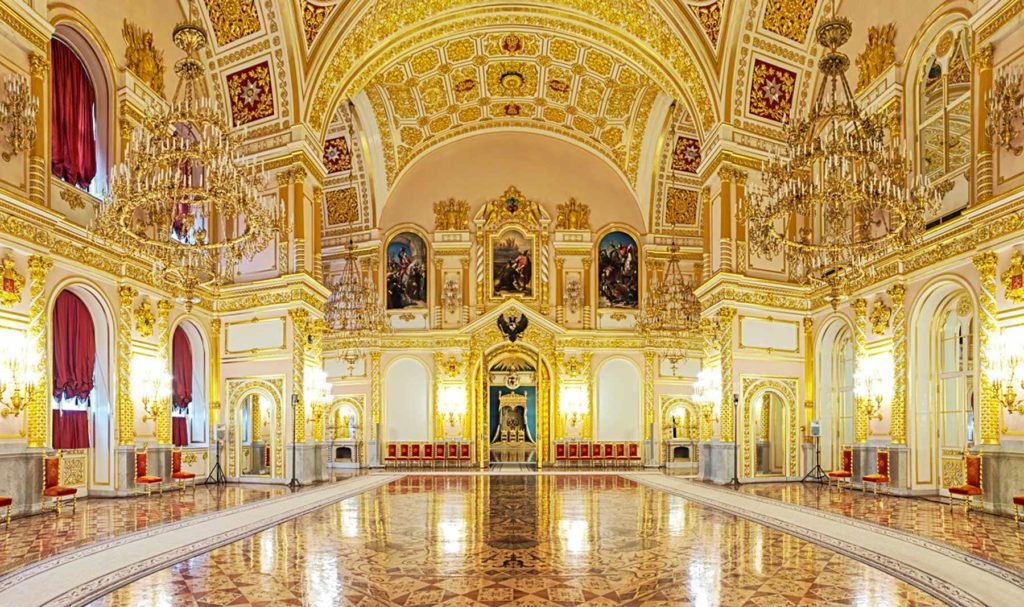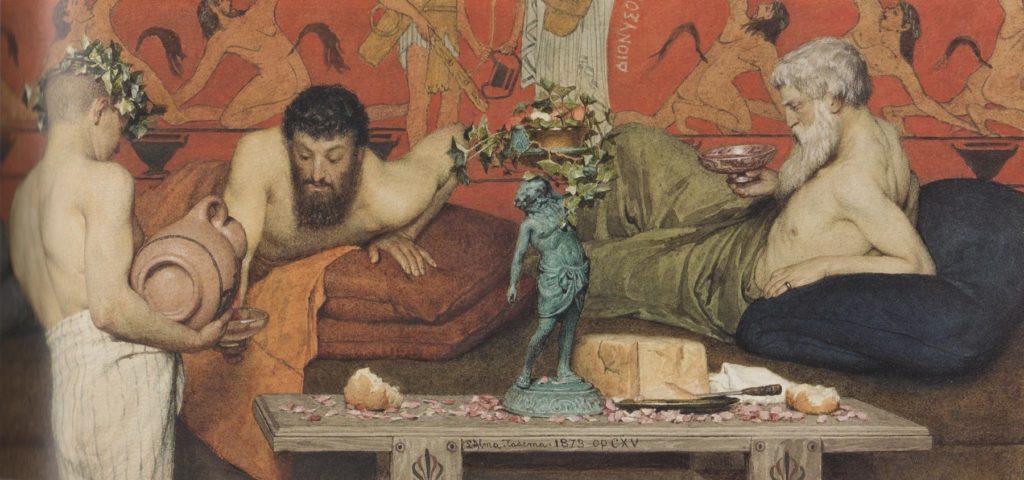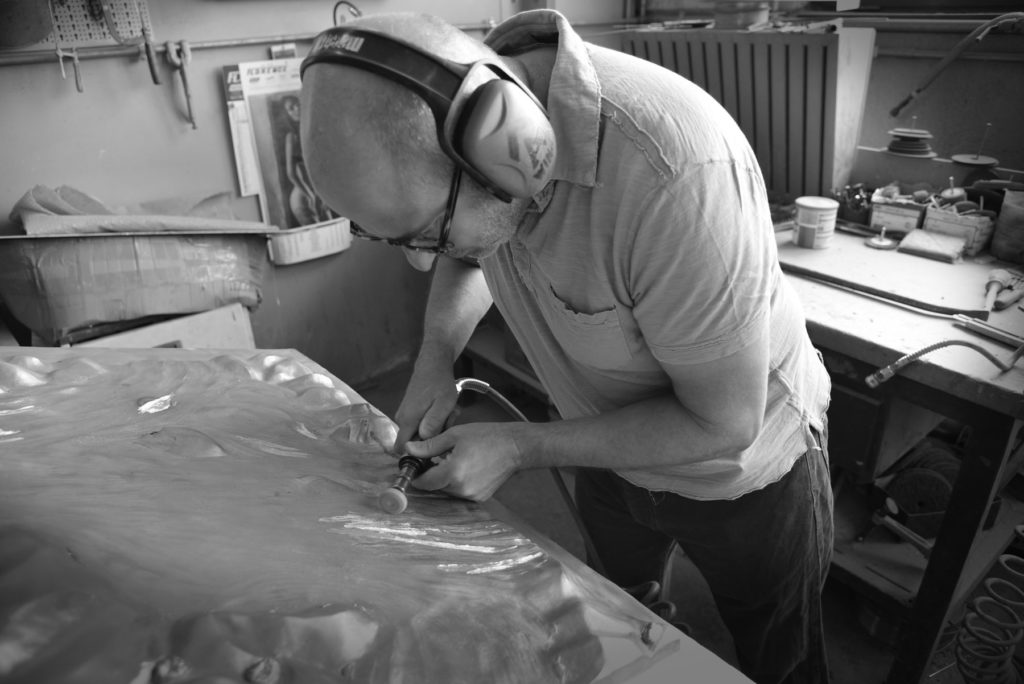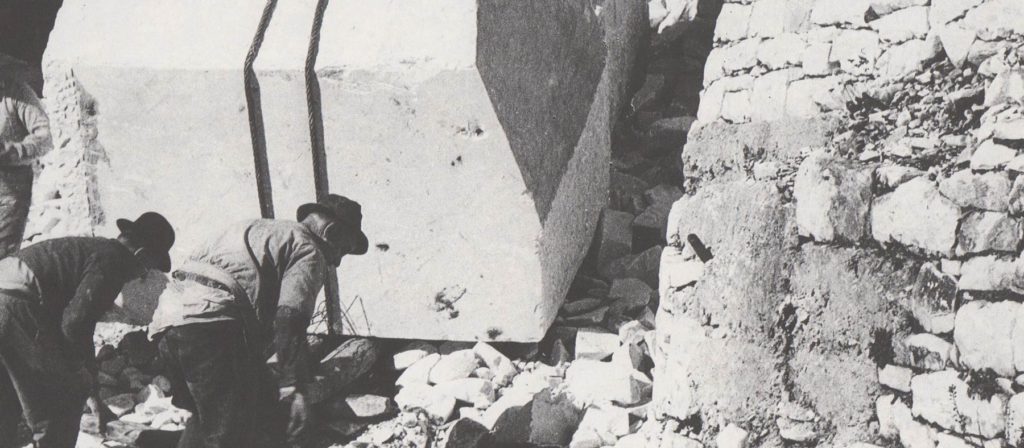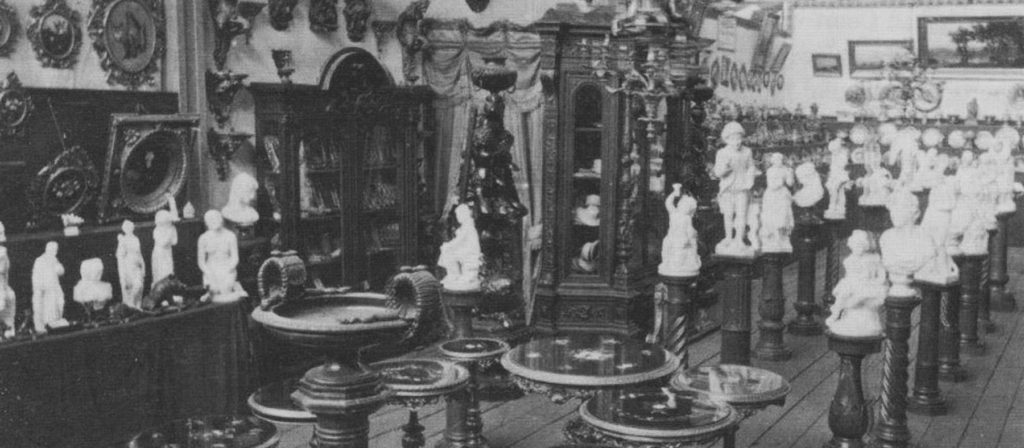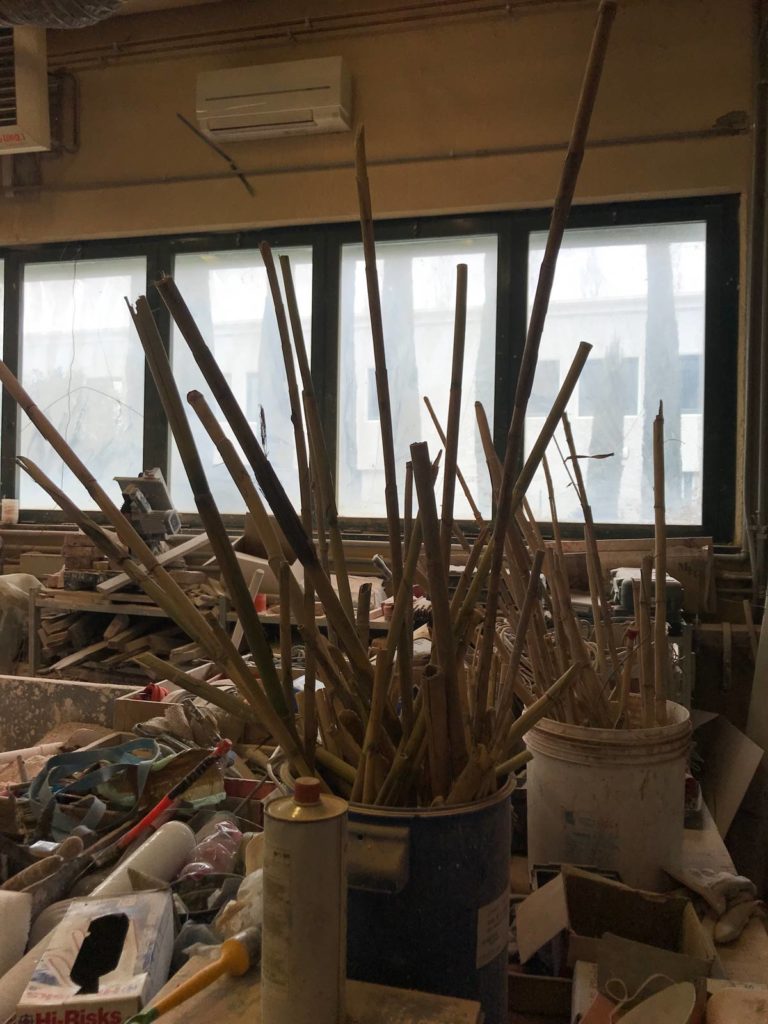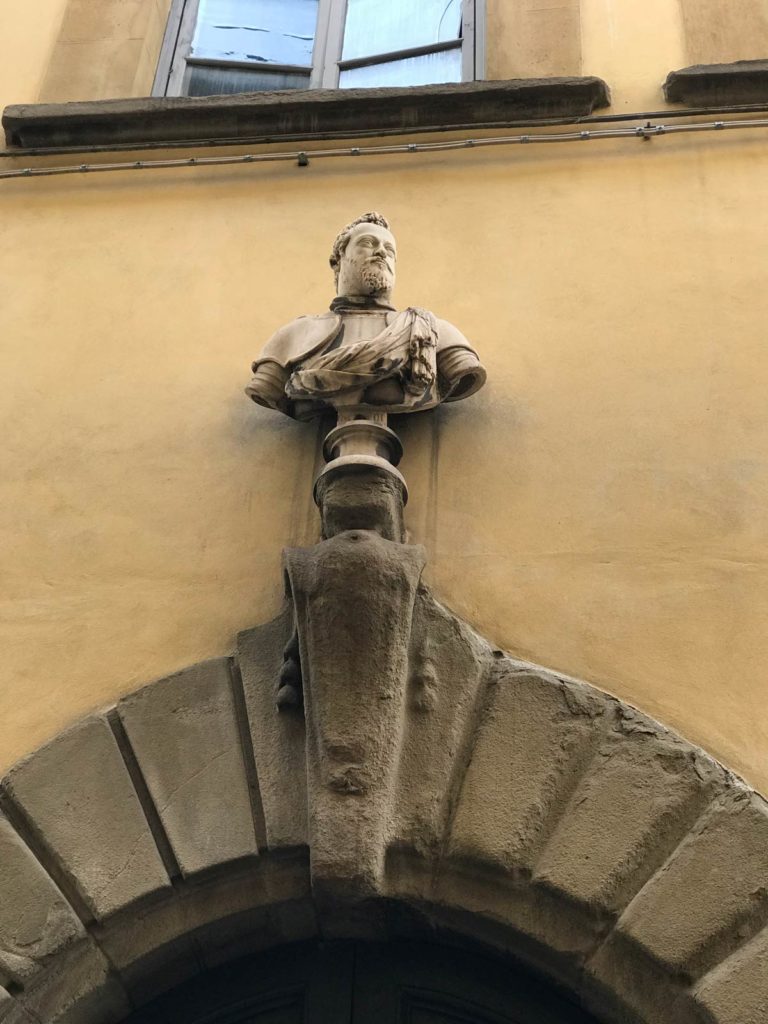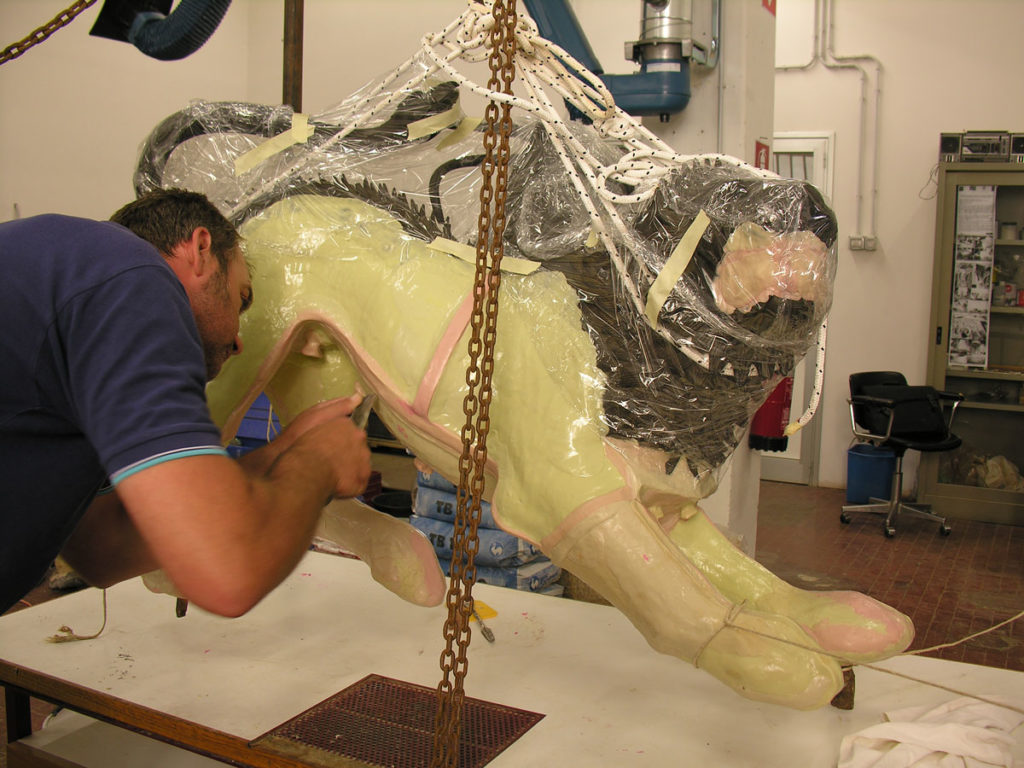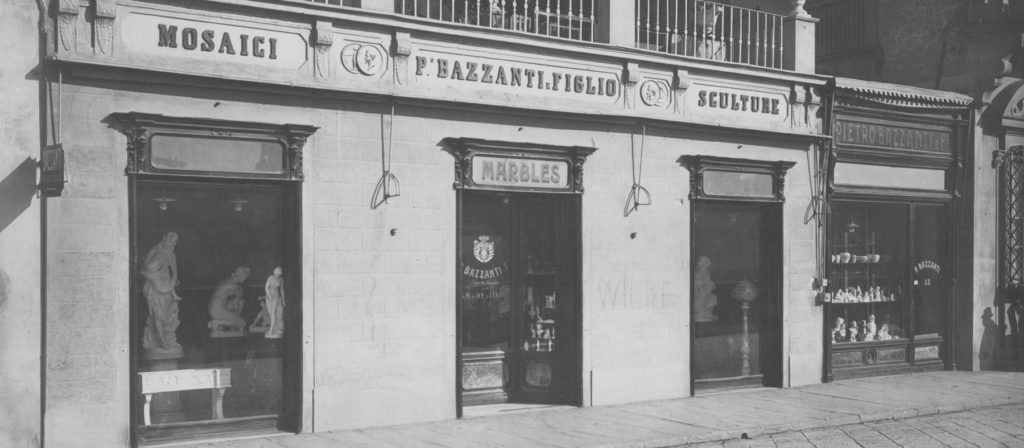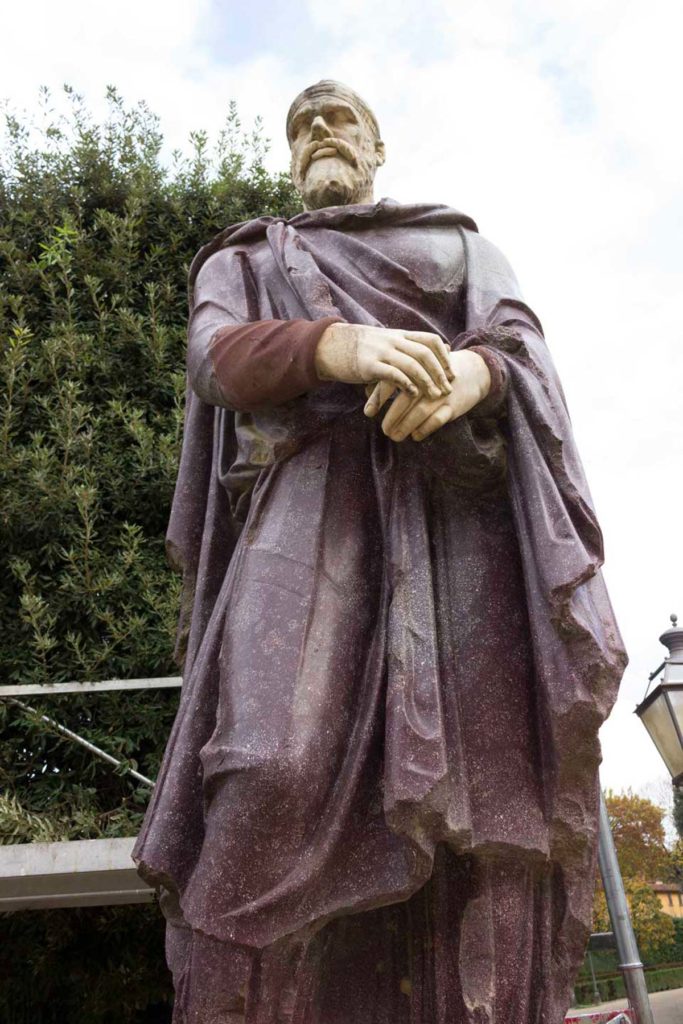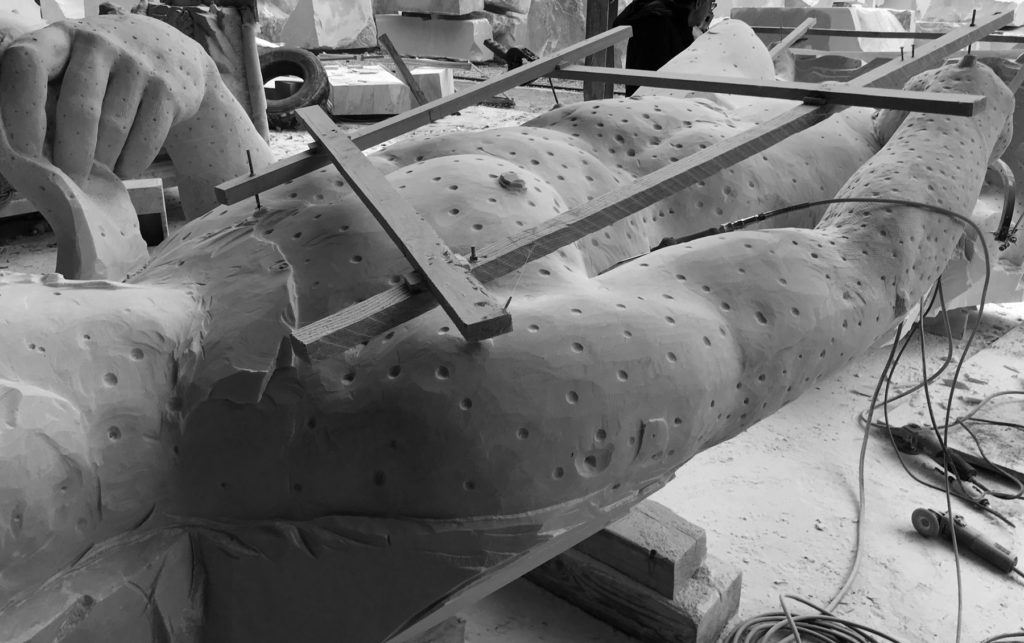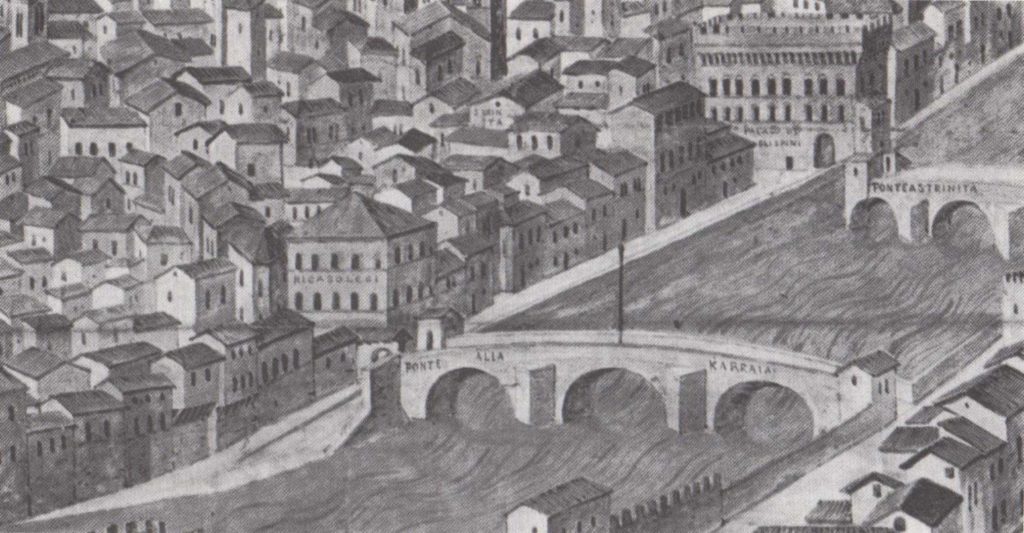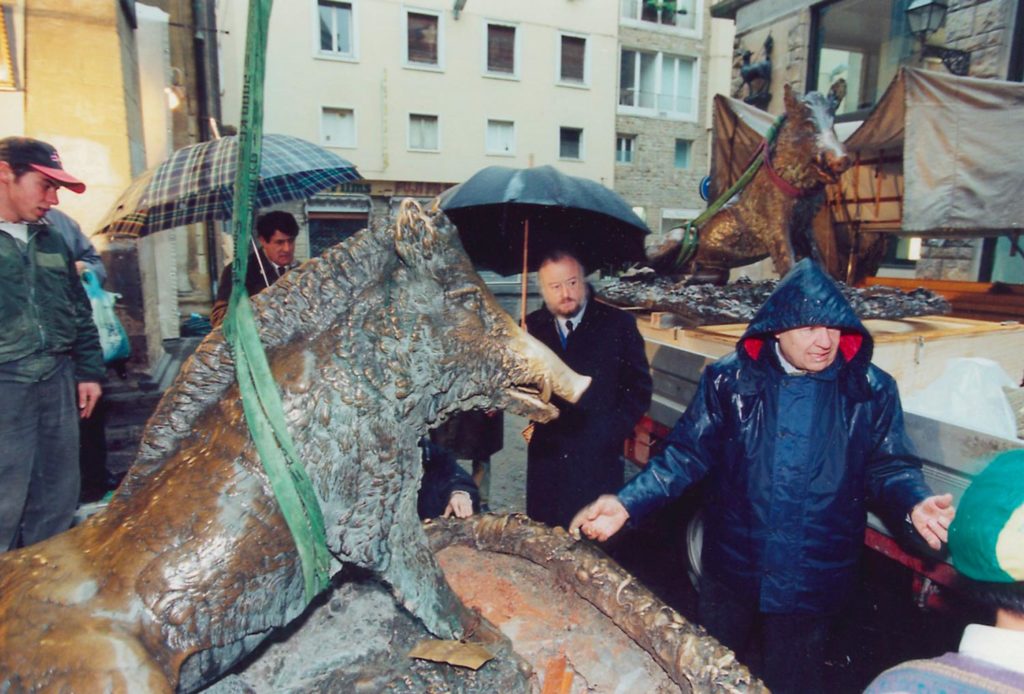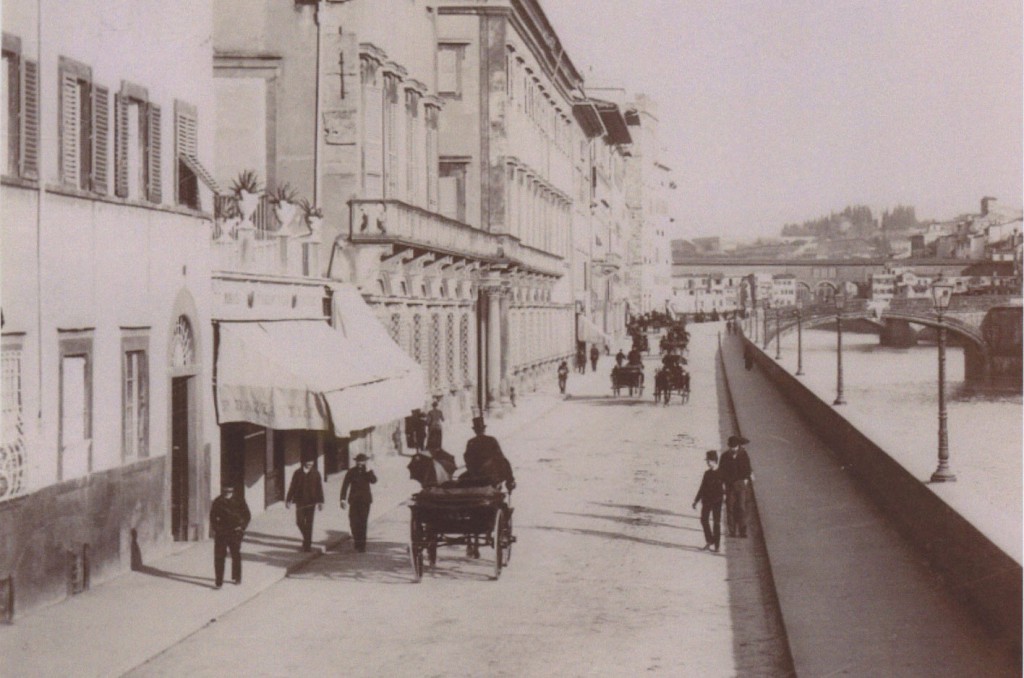Michelangelo, the Bacchus
Michelangelo, the Bacchus Vasari in the Lives, referring to Michelangelo, writes of: …un Dio d'amore, d'età di sei anni in sette, à iacere in guisa d'huom che dorma… […a God of love, aged from six years to seven, lying in the guise of a sleeping man…] alluding to the marble statuette that Michelangelo had sculpted [...]
Michelangelo and his first sculptures – Part III
Michelangelo and his first sculpturesPart III Lorenzo the Magnificent had hosted Michelangelo for 4 years in his palace in Via Larga, having him at the table with him and with various guests every day, including the humanists of the Platonic Academy. In 1492, upon the death of Lorenzo, Michelangelo was exiled from the Medici palace. [...]
Michelangelo and the Vatican Pietà
Michelangelo and the Vatican Pietà Vasari, regarding the Pietà, writes in his "Vite": …Alla quale opera non pensi mai scultore né artefice raro potere aggiugnere di disegno né di grazia, né con fatica poter mai di finitezza, pulitezza e di straforare il marmo tanto con arte quanto Michelagnolo vi fece, perché si scorge in quella [...]
Michelangelo and his first sculptures – Part II
Michelangelo and his first sculpturesPart II Vasari, in the 1568 edition of the “Vite” continues: …Dove in questo tempo consigliato dal Poliziano, uomo nelle lettere singulare, Michelagnolo fece in un pezzo di marmo datogli da quel signore [Lorenzo il Magnifico] la battaglia di Ercole coi centauri, che fu tanto bella che talvolta per chi ora [...]
Michelangelo, the Madonna of Bruges
Michelangelo, the Madonna of Bruges In 1501 Michelangelo had returned to Florence from Rome, and was working on the execution of the great David. Through the banker Jacopo Galli, his friend and guarantor, the two Mouscron brothers, Flemish fabric merchants, clients of Galli's bank, commissioned Michelangelo to create the sculpture of a Madonna and Child [...]
Michelangelo and his first sculptures – Part I
Michelangelo and his first sculpturesPart I Michelangelo was born in 1475 in Caprese in the province of Arezzo by pure chance: his father Ludovico Buonarroti, a Florentine, was temporarily mayor of the castle of Chiusi and Caprese. After his birth the family returned to live in Settignano, a town of stonemasons and sculptors, where they [...]
The Bernini’s David
The Bernini's David Pietro Bernini was born in Sesto Fiorentino in 1562. Pietro Bernini He learned to sculpt in the workshop of the Florentine Ridolfo Sirigatti, and to paint in the one in Rome of the Cavalier d'Arpino, a well-known mannerist. Cavalier d'Arpino, self portrait, 1640 In 1596 he was called by the viceroy of [...]
Giambologna and the rape of the Sabines – Part II
Giambologna and the rape of the Sabines - Part IIThe David and the Hercules It was in 1504 with Michelangelo's gigantic marble David placed outside the door of Palazzo della Signoria, now Palazzo Vecchio, that the government of Florence allowed the taboo of nudity seen from the front to be completely overcome, so much so [...]
Verrocchio and his David
Verrocchio and his DavidDavid in the Middle Ages The figure of the biblical David has fascinated the Florentines in a particular way since the Middle Ages. In the Old Testament he is described very well, better than most other prophets have been. Among the peculiar characteristics of him at the moment in which he kills [...]
Giambologna and the Rape of the Sabines – Part I
Giambologna and the Rape of the SabinesPart I Hendrick Goltzius, portrait of Giambologna The largest sculpture in the Loggia dei Lanzi in Piazza della Signoria is the Rape of the Sabines by Giambologna. Michelangelo's powerful but slender David positioned near the Loggia in front of the Palazzo Vecchio nearby, exceeds five meters in height, and [...]
Michelangelo and the David – Part III
Michelangelo and the David - Part IIIThe Masterpiece and its historyThe execution There is no news on how Michelangelo worked to arrive at the finished David. We only know that the block entrusted to him had already been badly rough-hewn by others to make a giant prophet to be placed on the spurs of the [...]
The Fountain of Neptune in Piazza Signoria and the bronze “Naiads”
The Fountain of Neptune in Piazza Signoria and the bronze "Naiads" Duke Cosimo I had commissioned the construction of the Biancone fountain at the north-east corner of Palazzo Vecchio, so that the central figure of Neptune would be in line with the other large statues of Michelangelo's David and Hercules and Cacus of Bandinelli. Piazza [...]
Michelangelo and the David – Part II
Michelangelo and the David - Part IIThe Masterpiece and its historyThe History Michelangelo had a splendid life but also a very difficult one, which he often complained about: discouragement due to body fatigue, lack of friends of any kind, political and religious crises, extreme avarice towards himself and his others (but not with family members [...]
The David by Donatello
The David by Donatello It was Cosimo dei Medici the Elder who, around 1440, commissioned Donatello to create a bronze statue of David cast in lost wax. In 1420 his father Giovanni di Bicci dei Medici, founder of the Banco dei Medici and great patron of art in Florence, left the management of his activities [...]
Michelangelo and the David – Part I
Michelangelo and the David - Part IThe Masterpiece and its historyThe History When Michelangelo signed the contract with the Opera del Duomo in Florence in August 1501 for the execution of the marble statue of a David, he was 26 years old, and had already executed a series of works, which later became "classics"; including [...]
The Chimera
The Etruscan Chimera The Chimera, this lion-dog with a snake's tail and a goat's head on its back, was formed from the transformation of fantastic animals from Syrian, Persian and Babylonian Assyrian art. Sphinx-lion, from Karkemish (Turkey), 9th century. BC, Anadolu Medeniyetleri Muzesi, Ankara It appeared in the Western world through Greek, Etruscan and Italic [...]
The Putti in the art after Donatello
The Putti in the art after DonatelloThe Putti in the friezes Donatello used friezes with cherubs in many of his works, such as for example in the two bronze pulpits in San Lorenzo in Florence, in the choir loft of the Florence Cathedral, in the pulpit of the Prato Cathedral. And he influenced various other [...]
The vaccine by Edward Jenner and the sculpture by Giulio Monteverde – Part II
The vaccine by Edward Jenner and the sculpture by Giulio MonteverdePart II The sculptor Giulio Monteverde creates a small great masterpiece with this model: Jenner's celebratory statue is very complex and represents the character who is inoculating the child with the vaccine. The light glides over the child's naked body without creating intense chiaroscuro. Instead [...]
The Holy Door – Part II
The Holy DoorPart II The rite of tearing down the wall was repeated until the opening of the Holy Door on December 24, 1974 by Paul VI. Until that day, the Holy Door in the basilica atrium was closed off by a white wall decorated with a gilded metal cross, with a leaden plaque underneath, [...]
Donatello and the Putto in the sculpture – Part VII
Donatello and the Putto in the scultpturePart VII Another important bronze casting by Donatello is that of Judith and Holofernes in natural size (236 cm with a bronze base) today in front of the Palazzo della Signoria in Florence, but probably commissioned by the Medici for the courtyard of their building. The heroic Jewish Judith [...]
The Holy Door – Part I
The Holy DoorPart I During the Jubilee, the Pope's opening of the Holy Door of St. Peter's Basilica in the Vatican is the universal invitation to enter the house of God. The Holy Door opens at the first vespers of Christmas Eve, the day Jesus was born, who came to open the door of heaven [...]
Arlington Memorial Bridge in Washington
Arlington Memorial Bridge in Washington In 1886 and then in 1898 the US Congress proposed for the first time the construction of a new bridge over the Potomac River in Washington, but to no avail. In 1902, the Senate Park Commission proposed in its so-called McMillan Plan to build one at the western end of [...]
Michelangelo’s Works
Michelangelo's Works Michelangelo Buonarroti was born on March 6, 1475 in Caprese near Arezzo, from a Florentine family, who brought the child back to Florence after a few days. In 1487, at the age of 12, Michelangelo entered the workshop of the famous painter Domenico Ghirlandaio as an apprentice. In 1488 he was invited to [...]
Josè Belloni and the “Carreta”
Josè Belloni and the "Carreta" The sculptor Belloni was born in 1882 in Montevideo in Uruguay, from a Spanish mother and a father born in Lugano, who had emigrated to Montevideo in search of work. In 1890 his parents separated, his mother remained in Montevideo while his father returned with his son to Lugano, who [...]
The 200 Years of the Bazzanti Gallery
I 200 Anni della Galleria Bazzanti The Postal Service of the Italian State considered the Pietro Bazzanti and Son Art Gallery of Florence an institution of great worldwide importance. In March 2022 they came to visit us in the Gallery some technicians of Poligrafico dello Stato, Post Office and Telegraph section, for an interview with [...]
Donatello and the Putto in the sculpture – Part VI
Donatello and the Putto in the sculpturePart VI The great equestrian monument of the warlord Gattamelata (Erasmo da Narni) that Donatello executed between 1443 and 1453 for Padua is the first large equestrian statue cast in bronze with the lost wax technique from the Roman era until the Renaissance. It was commissioned by the Venetian [...]
The vaccine by Edward Jenner and the sculpture by Giulio Monteverde – Part I
The vaccine by Edward Jenner and the sculpture by Giulio MonteverdePart 1 Lady Mary Wortley Pierrepont, wife of the English ambassador to Istanbul Lord Montague, fell ill with smallpox in 1714 and managed to recover. She had followed her husband to Turkey, where she had seen some women infect themselves and her children with smallpox [...]
Donatello and the Putto in the sculpture – Part V
Donatello and the Putto in the sculpturePart V The forty’s of the '400 are the years in which Donatello created his most important and greatest bronze works, in each of which he continues to make his delicious putti appear in one way or another. In the famous bronze David (Bargello Museum, Florence) he sculpts a [...]
Sergio Benvenuti, an artistic friendship and a long American history – The Broncos
Sergio Benvenuti, an artistic friendship and a long American history - The Broncos After the inauguration of the Fountain of the Two Oceans in Saint Diego, the contacts between Dudi and Pat Bowlen with me and Benvenuti softened, each one taken from their work; they confined themselves to greetings for the year-end holidays. Much later, [...]
The art of lost wax casting – Part 2
The art of lost wax casting Part 2 The negative moulds made on the sculptures to be cast in bronze are used to obtain a positive wax of the sculpture itself, of the same thickness that the bronze should have. The wax thus obtained is retouched, i.e. any imperfections are removed, until it is perfect [...]
Las Vegas, the Bellagio Hotel
Las Vegas, the Bellagio Hotel The furnishing of gardens, parks, interiors of villas and hotels is one of the frequent works of the Galleria Bazzanti. Our architects design the furniture on customer request, or collaborate with the architect that the customer already has. A typical case is that of the Bellagio Hotel in Las Vegas, [...]
Donatello and the putto in the sculpture – Parte IV
Donatello and the putto in the sculpturePart IV The desire and pleasure that Donatello has in creating the putti makes him sculpt them them at the base of the tomb of the bishop of Grosseto Giovanni Pecci in the cathedral of Siena (1426). They are carved at the bottom, foreshortened, covered by the large parchment [...]
The Bazzanti Gallery and Arno river’s floods
The Bazzanti Gallery and Arno river's floods From the Middle Ages to today, the Arno river has caused about ten disastrous floods in the town of Florence. In all of them the rains have beaten torrentially without stopping for many days throughout the Arno valley, whose catchment area is very large, slightly less than the [...]
The Celestial Sphere in Geneva – Part II
The Celestial Sphere in GenevaPart II In May 2019, the Ferdinando Marinelli Foundry was invited to the UN Palace in Geneva for a preliminary visit to Paul Manship's "Celestial Sphere" Monument located in the park in front of the Palace. Marinelli was accompanied by Carlo Lanaro, owner of Lanaro Steel Technology, specialized in the production [...]
Assisi, St. Mary of the Angels
Assisi, St. Mary of the AngelsLos Angeles, St. Francis and the Porziuncola in Assisi Thirty years after the death of St. Benedict (547), author of the famous Rule (the oldest manuscript codex of the Rule, dated 810, Abbey of St. Gall in Switzerland), it was built in 576, between the woods at the foot of [...]
The Celestial Sphere in Geneva – Part I
The Celestial Sphere in GenevaPart I In 1927 the competition for the design of the Palace of Nations in Geneva was announced, and the project of the team of architects including Carlo Broggi and Jozsef Vago was chosen. The Beaux Arts French neoclassical style was chosen. The works began in 1931 and ended in 1938. [...]
An american friend
An american friend In 1984 I was very lucky enough to meet the Architect Dudi Berretti in Florence, on the occasion of the creation of the bronze sculpture "Fountain of the Two Oceans" for San Diego in California. A character of unique sympathy and delicacy. We quickly became friends. The friendship was cemented when I [...]
Ghiberti’s St. Matthew
Ghiberti's St. MatthewThe loss and recovery of lost wax casting The bronze casting with the lost wax technique was lost with the fall of the Roman Empire, so much so that in the Middle Ages the sculpture was made exclusively in marble and stone, and the rare bronze doors were cast in Constantinople, where the [...]
The art of Lost Wax Casting – Part 1
The art of Lost Wax CastingPart 1 The realization of bronze sculptures during ancient times has always been more complex and expensive than that of marble or stone sculptures. Bronze is a metal alloy whose components have been difficult to find in the past, therefore expensive. The Romans considered bronze to be precious and noble, [...]
Donatello and the putto in the sculpture – Part III
Donatello and the putto in the sculpture - Part IIIDonatello from 1420 to 1440 Donato di Niccolò di Betto Bardi, known as Donatello, was born in Florence in 1386. He had a very long life, he died in Florence in 1466 at the age of 80 years. He was educated in the house of the [...]
Michelangelo and the marble quarries – Part II
Michelangelo and the marble quarriesPart IIThe quarries of Serravezza - Pietrasanta Michelangelo, as he himself wrote in March 1520, at the request of the pope, in 1517-8 left from Rome for the Serravezza quarries: "I was sent from Rome to Seraveza, before I started to quarry, to see if there was marble". But he goes [...]
Donatello and the putto in the sculpture – Part II
Donatello and the putto in the sculpture - Part IIThe Renaissance On the left side of the Cathedral of Florence (Santa Maria del Fiore) there is the Almond Gate, executed in three phases: 1391-1397, 1404 -1409, 1414 -1422. Without going into the list of the artists who worked on it, it is enough to note [...]
Michelangelo and the marble quarries – Part I
Michelangelo and the marble quarriesPart I Michelangelo reached the marble quarries in Carrara twice, in 1497 and 1503, but Condivi, who wrote the biography published in 1553, does not mention it. In November 1497 he went there to find marble for the Pietà, a monument contracted by the cardinal of San Dionigi (Jean de Bilheres [...]
Donatello and the putti in the sculpture – Part I
Donatello and the putti in the sculptures - Part IThe Putti in history In the history of Western art the ancestor of the Renaissance "putto" appears in Greece in the form of the young Eros, god of sexual love and desire, but also a divine principle that pushes towards beauty. He is the son of [...]
The beginning of Renaissance sculpture: Donatello’s David
The beginning of Renaissance sculpture: Donatello's David The fifteenth century, the beginning of the Renaissance, is a founding moment of Western culture, whose principles, philosophy and art are marked up to the present day. In this century a group of brilliant characters are born in Florence in all human knowledge: science, astronomy, philosophy, literature, humanism, [...]
The Cacciucco Fountain
The Cacciucco Fountain From a letter of 25 June 1626, which the Camerlengo Lorenzo Usimbardi wrote to Grand Duke Ferdinando II de 'Medici …appears that Pietro Tacca declares that is convenient to cast two fountains to be put on the sides of the big monument of Ferdinando I dei Medici with the 4 black prisoners, [...]
The two Ferdinands
The two Ferdinands The Pietro Bazzanti Gallery in Florence was purchased by the Marinelli family in 1960, family that owns the Ferdinando Marinelli Artistic Foundry in Florence. And it is thanks to the "two Ferdinands", as it is narrated below, that the Foundry and the Gallery met and joined. Ferdinando Marinelli Senior went down, at [...]
Sergio Benvenuti, an artistic friendship and a long American history – The Fountain of Two Oceans in San Diego
Sergio Benvenuti, an artistic friendship and a long American history - The Fountain of Two Oceans in San Diego When I was a child, I used to play in the Foundry, I often found Sergio Benvenuti, smeared of clay, busy creating some monumental sculpture. I remember him prone to sudden fits of anger when clay [...]
Fountain of the Tritons in Malta – Part II
Fountain of the Tritons in Malta - Part IIThe restoration The priority has been given to the elimination of the reinforced concrete poured inside the fountain when it was placed at the end of the 1950s on the travertine base. The Maltese technicians thought in this way to "strength" the brass sculptures and to find [...]
Fountain of the Tritons in Malta – Part I
Fountain of the Tritons in Malta - Part IHistory The fountain of the Tritons is considered by the Maltese as the symbol of the City of Valletta and of the entire island. It was modeled in the 50's by the Maltese sculptor Vincent Apap, and the hydraulic system was designed by his aide Victor Anastasi. [...]
The Gipsoteca of the Ferdinando Marinelli Foundry and of the Bazzanti Gallery
The Gipsoteca of the Ferdinando Marinelli Foundry and of the Bazzanti Gallery Our treasure, in addition to the artistic work capacity of our artisans, is that of the Ferdinando Marinelli Gipsoteca, preserved in sheds to this reserved. La nascita della Gipsoteca Ferdinando Marinelli Ferdinando Marinelli Senior, that started the Artistic Foundry in 1905, performed the [...]
Another marble colossus: the replica of the Farnese Hercules
Another marble colossus: the replica of the Farnese Hercules Another exciting adventure has been to sculpt in marble the colossal Farnese Hercules of the Naples Museum, a Greek statue of the III century AD., 3,17 meters high. It is one of the few ancient sculptures signed by the author: Glicone di Atene, as can be [...]
The restoration of the Kremlin
The restoration of the Kremlin In 1933 Stalin transformed two wonderful halls of the Kremlin festivals, the halls of Sant'Andrea and Sant'Alessandro, in a large room for the meetings of the CPSU, destroying the original furnishings and the sumptuous decorations. When we were called in 1998 for their complete restoration we found two half-empty halls [...]
The Bazzanti Gallery of the ancient Romans
The Bazzanti Gallery of the ancient Romans The desire to decorate one's home with replicas of masterpieces from the past is a fashion that has existed since the Roman era. The Romans in fact loved to make copies of Greek sculptures, often "reversing" the materials: often marble statues were reproduced in bronze, and vice versa. [...]
The bronze door of Liviu
The bronze door of LiviuA fortuitous meeting In 2013 the Artistic Foundry Ferdinando Marinelli, together with the Bazzanti Art Gallery and the friend Federico Frediani, organized e a bronze sculpture exhibition at the Italian Cultural Institute of Los Angeles together. On that occasion he was invited to spend two days in the villa of friends [...]
Carrara marble and the Apuan quarries
Carrara marble and the Apuan quarriesThe Etruscans The beginnings of the extraction of white Carrara marble date back to the 6th century BC, by Etruscan craftsmen active in Pisa and Volterra, witnessed by about a hundred various monuments (cippi of various shapes, decorated stone bases, large vases, but also female statues and large figured cippi [...]
Pietro Bazzanti’s participation in International Exhibitions in Australia
Pietro Bazzanti's participation in International Exhibitions in Australia The first documents relating to the arrival in Sydney of Italian ships date back to the mid-800s: in late August 1852, the Italian 150-ton brigantine called Rosa arrived in Sydney; from 1853 to 1855 the ship of the Kingdom of Sardinia disembarked and climbed several times from [...]
Foundry, hidden aspects
Foundry, hidden aspects The lost wax castings in bronze needs a long work of highly specialized craftsmen. This is especially true for the execution of replicas of the major masterpieces of art. When a bronze sculpture comes out of the foundry, it has a beautiful patina, shiny, clean, charming. But the work that leads from [...]
The Giambologna Foundry in Florence
The Giambologna Foundry in FlorenceGiambologna in Florence Giambologna, portrayed by the painter Hendrick Goltzius, arrives in Florence in the early fifties of the 1500s, hosted for two or three years by Bernardo Vecchietti, who introduced him to Francesco I dei Medici, making him take his service. The Medici, who was moving from the Signoria Palace [...]
The Identical Etruscan Chimera
The Etruscan Chimera In 1553 in Arezzo, during the excavations for the foundations of the Medici fortress, a bronze was found of a strange animal with a lion's head, a panther's body and a goat's head “stuck” on its back, as Vasari wrote. It was immediately recognized as the mythological Chimera, and was brought to [...]
Lungarno Corsini and Galleria Bazzanti part II
Lungarno Corsini and Galleria BazzantiPart IIThe Corsini's Coming from Castelvecchio di Poggibonsi, the Corsini family settled in Florence in the mid-twelfth century, in the district of San Felice in Piazza, and made a rapid career as bankers, obtaining important political offices in the city where they had important positions. In the 16th and 17th centuries [...]
The replica of the Boboli’s Dace Pileatus
The replica of the Boboli's Dace Pileatus After a first defeat suffered at the end of the 1st century AD from the Roman army commanded by the emperor Domitian, at the beginning of the 2nd century AD the Emperor Trajan with 15 legions managed to defeat and subdue the Dacian people with his king Decebalus, [...]
The “Little Florence” project, the replica of the marble sculpture of Michelangelo’s David
The "Little Florence" project, the replica of the marble sculpture of Michelangelo's David In January 2017, Dr. Wei He, the founder of the He University Campus in Shenyang, is visiting the Bazzanti Gallery. He is looking for marble and bronze replicas of ancient and renaissance masterpieces, searching for sculptures created only on molds taken from [...]
Lungarno Corsini and Galleria Bazzanti
Lungarno Corsini and Galleria BazzantiFirst PartRoman Florence Florence, a Roman city founded in the 1st century BC, had its brick walls with a defense moat, obtained by moving the Mugnone river along them, that is to say in the current Via Tornabuoni, which currently ends in Lungarno Corsini. The walls continued to be used and [...]
The Porcellino of Florence
The "Porcellino" of FlorenceThe marble boar, Roman replica The bronze boar of the fountain of the Loggia del Mercato Nuovo in Florence, was immediately nicknamed, with the typical Florentine irony, "il Porcellino" (the small pig). It all began with the visit that Cosimo I dei Medici made in 1560 to Pope Pius IV. Not only [...]
Postcards and Vintage Pictures
A selection of pictures and postcards with images of works by the Art Gallery Peter Bazzanti and Son and the Ferdinando Marinelli Artistic Foundry of Florence concerning Cart of the Pioneers, the Monumental Staircase in the Vatican, the Holy Door of St. Peter's Basilica, The Porcellino in Florence, statues and fountains for the Casino of Las Vegas [...]

